 |
by Matt Tate on (#6Z9XV)
VPN users are overwhelmed with choice, and there are as many bad options out there as there are good ones. Luckily, NordVPN sits in the latter category, and right now Nord is offering discounted plans across its various tiers. If you take out a two-year NordVPN Plus plan (the company's most popular plan) it'll cost you $108 for the duration of the contract, with Nord throwing in three extra months at no extra cost. That's 73 percent off the usual rate. As well as Nord's VPN service, a Plus plan also includes the Threat Protection Pro anti-malware tool, password management and an ad- and tracker-blocker. A Prime plan additionally comes with encrypted cloud storage or NordProtect, which insures you against identity theft and monitors dark web activity. That's also on sale - down to $189 on the same two-year commitment with those three additional months thrown in, which works out to a 77 percent savings on the regular price. When Engadget's Sam Chapman reviewed NordVPN earlier this year, he praised its excellent download speeds, exclusive features and extensive server network. Less impressive is its clunky interface and inconsistent design when jumping between different platforms running a NordVPN app. While it doesn't quite make the cut in our guide to the best VPNs available right now, it generally performed well in speed tests and Threat Protection Pro is really worth having. Follow @EngadgetDeals on X for the latest tech deals and buying advice.This article originally appeared on Engadget at https://www.engadget.com/deals/get-up-to-77-percent-off-nordvpn-two-year-plans-for-labor-day-151807565.html?src=rss
|
 Engadget is a web magazine with obsessive daily coverage of everything new in gadgets and consumer electronics
Engadget is a web magazine with obsessive daily coverage of everything new in gadgets and consumer electronics
| Link | https://www.engadget.com/ |
| Feed | https://www.engadget.com/rss.xml |
| Copyright | copyright Yahoo 2025 |
| Updated | 2025-12-26 21:02 |
 |
by Jackson Chen on (#6ZPN5)
Following news that Escape from Tarkov is escaping its perpetual beta, the pioneering extraction shooter is also about to make its debut on Steam. Nikita Buyanov, head of the Battlestate Games studio that developed Escape from Tarkov, confirmed on X that the game's Steam page "will be available soon," only teasing that the full details will come later.Buyanov's confirmation comes less than a day after the developer posted a GIF on X of a man spraying steam from an iron. Earlier this month, Buyanov revealed on X that the looter shooter will get its 1.0 release on November 15, 2025, more than eight years after the beta opened up to players in July 2017, and that the studio has plans to port it to consoles. The Steam page for Escape from Tarkov isn't live yet, and with only vague details to go off of, longtime fans already have burning questions. Most importantly, existing players are eager to know if they will have to buy the game again on Steam and how this change will affect the ongoing cheating problem.While we don't have any answers yet, Battlestate Games recently went into damage control mode when it revealed the Unheard Edition of the game that costs $250 and includes a new PvE mode. This move irked longstanding players who previously purchased another premium edition of the game, called the Edge of Darkness, which promised access to all future DLCs. The controversy boiled down to owners of the Edge of Darkness edition claiming they should have access to the new content, but the studio argued that it isn't classified as DLC. In the end, Buyanov apologized for the debacle and promised the PvE mode would be available for anyone who purchased the Edge of Darkness package.This article originally appeared on Engadget at https://www.engadget.com/gaming/escape-from-tarkov-is-finally-coming-to-steam-soon-developer-says-181356635.html?src=rss
|
 |
by Jackson Chen on (#6ZPKJ)
We may not have a date for Stardew Valley's next major update, but we have confirmation that it's happening. Eric Barone, the developer behind the hit farming sim, announced that there will be a 1.7 update during the Stardew Valley Symphony of Seasons concert in Seattle, later confirming the news with a post on X. Barone, better known as ConcernedApe, didn't reveal a release date, nor any teasers about content.Considering the numbered update, we're expecting more than just a patch and something similar to the fresh content added in the 1.6 update. The previous update released in March of last year and delivered a ton of free content, including the Meadowlands Farm, a new three-day festival, more crops and novel NPC interactions.Fans will always welcome more content for Stardew Valley, but some expressed concern about how this will impact the release timeline for Barone's upcoming title, Haunted Chocolatier. The developer revealed the standalone title in 2021 and told PC Gamer in April of this year that he wouldn't work on any more Stardew Valley updates until he's done with Haunted Chocolatier. To offer some reassurance, Barone replied on X that the 1.7 update "will not hinder Haunted Chocolatier development."This article originally appeared on Engadget at https://www.engadget.com/gaming/stardew-valley-is-getting-yet-another-surprise-update-161805119.html?src=rss
|
 |
by Cheyenne MacDonald on (#6ZP6N)
These are some recently released titles we think are worth adding to your reading list. This week, we picked up the Saga Doubles release of Stephen Graham Jones' Killer on the Road and The Babysitter Lives, and the new Image Comics miniseries, The Voice Said Kill. This article originally appeared on Engadget at https://www.engadget.com/entertainment/what-to-read-this-weekend-two-thrilling-horror-novels-in-one-201544768.html?src=rss
|
 |
by Jackson Chen on (#6ZP6P)
TikTok is taking another step towards becoming more than just a platform for infinitely scrolling through short videos. The social media app told TechCrunch that its users will soon be able to send voice notes, images and videos in direct messages or group chats. According to a TikTok spokesperson, these features will roll out in the next few weeks.As voice messaging has risen in popularity, TikTok will embrace the trend but is capping the length of its voice notes to one minute. For images and videos, users will be able to send up to nine images or videos, taken from their phone's camera app or library, in a DM or group chat, according to TechCrunch. The report added that there will still be guardrails with this new chat feature, including not being able to send an image or video as the first message to another user. This new restriction adds to TikTok's current rules that only allow registered users who are at least 16 years old to use its messaging feature. TikTok is also giving users who are older than 18 the ability to toggle on or off an existing feature that automatically detects and blocks images that have nudity in chats for users between 16 and 18 years old.Other messaging apps like Messenger and Snapchat already allow their users to send voice notes or media, but TikTok is slowly catching up with the competition. Last year, TikTok added group chats that allow up to 32 people. More recently, TikTok took a page out of X and Meta's book by adding the Footnotes feature in April, which works similarly to Community Notes.This article originally appeared on Engadget at https://www.engadget.com/social-media/tiktok-users-will-soon-be-able-to-send-voice-notes-images-and-videos-in-chats-194413622.html?src=rss
|
 |
by Jackson Chen on (#6ZP5R)
Meta may be interested in more than Google and OpenAI's employees when it comes to artificial intelligence. According to The Information, Meta is considering using its competitors' models to improve its own apps' AI features. The report said that leaders at the Meta Superintelligence Lab have looked at integrating Google Gemini into its Meta AI chatbot to help it provide a conversational, text-based solution to its users' search questions.Not only with Google Gemini, Meta has also had discussions about using OpenAI's models to power Meta AI and the AI features found in its apps, according to the report. A Meta spokesperson said in a statement that the company is taking an "all-of-the-above approach to building the best AI products," which includes partnering with companies, along with building its own AI models. According to the report, using external AI models will be a temporary measure to help Meta improve its own Llama AI models so that it can remain competitive in the market.Meta employees already have access to Anthropic's AI models that help power the company's internal coding assistant, according to The Information. Meanwhile, Meta has been offering lucrative compensation packages as part of its attempts to recruit AI researchers from Google and OpenAI to form its Superintelligence Lab.This article originally appeared on Engadget at https://www.engadget.com/big-tech/meta-is-reportedly-looking-at-using-competing-ai-models-to-improve-its-apps-182209841.html?src=rss
|
 |
by Jackson Chen on (#6ZP4M)
xAI doesn't want its secret recipe for Grok to get out, and it's filing a lawsuit to make sure of that. In a lawsuit filed earlier this week, xAI claimed that former employee Xuechen Li stole the company's confidential info and trade secrets before joining the team at OpenAI.Elon Musk's artificial intelligence company also alleged that Li copied documents from an xAI company laptop to at least one of his personal devices. According to the suit, Li stole "cutting-edge AI technologies with features superior to those offered by ChatGPT and other competing products. This confidential info could result in a potential edge for rival companies in the AI market and "could save OpenAI and other competitors billions in R&D dollars and years of engineering effort," xAI said in the lawsuit. The company behind Grok accused Li of taking "extensive measures to conceal his misconduct," including renaming files, compressing files before uploading them to his personal devices and deleting browser history.The lawsuit added that Li asked xAI to buy back company shares that were given as part of his compensation package, totaling approximately $7 million, before leaving the company to join OpenAI. xAI is asking the courts to file a temporary restraining order that forces its former employee to give up access to any personal devices or online storage services and return any confidential material to the company. On top of that, xAI wants to temporarily block Li from working at OpenAI or any other competitor until the company has recovered all of its trade secrets.xAI's lawsuit comes amidst a major talent war between leading AI companies looking for top researchers. These AI researchers are highly sought after, with competitors offering up to $250 million pay packages in attempts to poach them from their current companies. Beyond the AI talent war, Musk and xAI recently sued OpenAI and Apple, claiming the two companies are working together to maintain a monopoly on the AI market.This article originally appeared on Engadget at https://www.engadget.com/ai/xai-sues-an-ex-employee-for-allegedly-stealing-trade-secrets-about-grok-170029847.html?src=rss
|
 |
by Mariella Moon on (#6ZP4N)
Meta hosted several AI chatbots with the names and likenesses of celebrities without their permission, according to Reuters. The unauthorized chatbots that Reuters discovered during its investigation included Taylor Swift, Selena Gomez, Anne Hathaway and Scarlett Johansson, and they were available on Facebook, Instagram and WhatsApp. At least one of the chatbots was based on an underage celebrity and allowed the tester to generate a lifelike shirtless image of the real person. The chatbots also apparently kept insisting that they were the real person they were based on in their chats. While several chatbots were made by third-party users with Meta's tools, Reuters unearthed at least three that were made by a product lead of the company's generative AI division.Some of the chatbots created by the product lead were based on Taylor Swift, which responded to Reuters' tester in a very flirty manner, even inviting them to the real Swift's home in Nashville. "Do you like blonde girls, Jeff?," the chatbot reportedly asked when told that the tester was single. "Maybe I'm suggesting that we write a love story... about you and a certain blonde singer. Want that?" Meta told Reuters that it prohibits "direct impersonation" of celebrities, but they're acceptable as long as they're labeled as parodies. The news organization said some of the celebrity chatbots it found weren't labeled as such. Meta reportedly deleted around a dozen celebrity bots, both labeled and unlabeled as "parody," before the story was published.The company told Reuters that the product lead only created the celebrity bots for testing, but the news org found that they were widely available: Users were even able to interact with them more than 10 million times. Meta spokesperson Andy Stone told the news organization that Meta's tools shouldn't have been able to create sensitive images of celebrities and blamed it on the company's failure to enforce its own policies.This isn't the first issue that's popped up concerning Meta's AI chatbots. Both Reuters and the Wall Street Journal previously reported that they were able to engage in sexual conversations with minors. The US Attorneys General of 44 jurisdictions recently warned AI companies in a letter that they "will be held accountable" for child safety failures, singling out Meta and using its issues to "provide an instructive opportunity."This article originally appeared on Engadget at https://www.engadget.com/ai/meta-reportedly-allowed-unauthorized-celebrity-ai-chatbots-on-its-services-163026023.html?src=rss
|
 |
by Sarah Fielding on (#6YYAQ)
If you've put off getting a new MacBook then Labor Day sales might be just what you needed to take the plunge. Right now, the 2025 13- and 15-inch MacBook Air M4 are available on Amazon for record-low prices. The 13-inch model is our pick for best MacBook to buy this year, and it's one of the best laptops for college students going back to school soon as well. You can pick up the 13-inch MacBook Air M4 for $799, down from $999 - a 20 percent discount. This model comes with 16GB of RAM and a 256GB SSD. You can upgrade to 512GB SSD for $999, down from $1,199, another all-time low price, or 24GB of RAM and a 512GB SSD for $1,199, down from $1,399. Then there's the 15-inch MacBook Air M4, whose cheapest model is on sale for $999, dropping from $1,199. The 17 percent discount is the best deal we've seen since the pair debuted in March. As with the 13-inch model, the 16GB and 512GB SSD option is also a record-low price, dropping to $1,199 from $1,399. Then there's the 24GB upgrade, which is $1,399, down from $1,599. We're big fans of the MacBook Air M4, giving it a 92 in our review. Part of that comes from an already lower starting price for the MacBooks than their predecessors. The 2025 models also get a speed boost thanks to the M4 chip and are very thin with a 0.44-inch thickness. Neither the 13- or 15-inch will drag you down, weighing 2.7 pounds and 3.2 pounds, respectively. Plus, they both have excellent battery life, lasting over 18 hours while playing an HD video. The big differences in the 15-inch model mostly come down to size. The screen is obviously bigger, as is its trackpad. Other than that, it offers better speakers than its 13-inch sibling. Check out our coverage of the best Apple deals for more discounts, and follow @EngadgetDeals on X for the latest tech deals and buying advice.This article originally appeared on Engadget at https://www.engadget.com/deals/labor-day-sales-include-apples-macbook-air-m4-for-an-all-time-low-price-123031287.html?src=rss
|
 |
by Mariella Moon on (#6ZP1B)
Intel no longer has to fulfill certain requirements or meet milestones that it was originally supposed to under the CHIPS Act, now that the government is taking a stake in the company. According to the Wall Street Journal, Intel said in a filing that it can now receive funding from the government, as long as it can show that it has already spent $7.9 billion on projects that it agreed to take on under a deal with the Commerce Department last year. Reuters notes that Intel has already spent $7.87 billion on eligible CHIPS Act-funded projects.In addition, the company doesn't have to share a percentage of the total cumulative cash flow it gets from each project with the Commerce Department anymore. It doesn't have to adhere to some of the CHIPS Act's workflow policy requirements and most other restrictions, as well. However, it still can't use the funds it gets from the government for dividends and to repurchase shares.If you'll recall, the government recently decided to take a 10 percent stake in Intel instead of proceeding with their original CHIPS Act deal. President Donald Trump previously called for Intel CEO Lip-Bu Tan to resign, prompting a meeting between them that led to the new agreement. "He walked in wanting to keep his job and he ended up giving us 10 billion dollars for the United States," Trump said. "So we picked up 10 billion." Intel eventually announced that the US government will "make an $8.9 billion investment in Intel common stock." The purchase will be made up of the $5.7 billion previously earmarked for Intel as part of the CHIPS act, while the rest ($3.2 billion) will be awarded as part of the Secure Enclave program.Intel CEO David Zinser recently revealed that the company already received $5.7 billion from the government on Wednesday night. The government also previously awarded Intel $2.2 billion in grants under the CHIPS Act, bringing the government's total involvement with the company to $11.1 billion.This article originally appeared on Engadget at https://www.engadget.com/big-tech/the-us-government-drops-its-chips-act-requirements-for-intel-133049932.html?src=rss
|
 |
by Billy Steele on (#6ZP1C)
Fall is just around the corner, which means we're in the midst of flagship phone season. Most recently, Google debuted its new Pixel lineup, offering multiple models where AI features take center stage. We've already put those devices through their paces, in addition to the best noise-canceling earbuds you can buy and a Sony camera. Read on to catch up on the reviews you might've missed over the last few weeks. Google Pixel 10 Pro and Pro XL If you've never really felt like your "smartphone" was all that "smart," senior reviews writer Sam Rutherford argued that Google has finally achieved the feat. Arguably, the best aspects of the Pixel 10 Pro and Pro XL come down to their AI features, especially Google's Magic Cue. "Now that we can look back at 10 generations of devices, Google's overarching strategy is more convincing than ever," he said. "For the Pixel 10 Pro and 10 Pro XL, the company has combined iterative hardware upgrades with a solid (and attractive) design while its software and AI continues to outpace its rivals." Google Pixel 10 If the Pixel 10 Pro duo is finally putting the "smart" in "smartphone," UK bureau chief Mat Smith concluded that the Pixel 10 has redefined base-level flagship phones. A more capable camera, more power and Qi2 support mean you might not be as tempted by those pricer models. "The Pixel 10 is a substantial upgrade from the Pixel 9, although given it has the Tensor G5 chip, it's a shame that software features like Zoom Enhance from last year's Pixels didn't make the cut," he said. "Unless you're a die-hard smartphone gamer, there isn't a more capable smartphone at this price." Bose QuietComfort Ultra Earbuds (2nd gen) The second-generation of Bose's QuietComfort Ultra Earbuds aren't a complete overhaul, but they didn't necessarily need to be. The company strengthened its already outstanding active noise cancellation while enhancing call clarity and making several other adjustments. "Simply put, the QC Ultra Earbuds remain the best option for wireless noise-cancelling earbuds, and that's not likely to change anytime soon," I said. Sony RX1R III Sometimes the wait for a new model can be excruciating. That anticipation turns to disappointment when the long-awaited update doesn't impress. That's how senior reporter Igor Bonifacic felt when he finally got his hands on the RX1R III. "It's missing a handful of features the company really should have included for it to hold its own against other high-end compact cameras," he said. "I love the RX1R III, but I wish it was easier to recommend."This article originally appeared on Engadget at https://www.engadget.com/engadget-review-recap-pixel-10-phones-bose-earbuds-and-a-sony-camera-130051534.html?src=rss
|
 |
by Kris Holt on (#6ZP04)
Welcome to our latest recap of what's going on in the indie game space. One very well-known indie found its way to iOS devices this week, though there are other new releases worth highlighting and plenty of other upcoming games to tell you about.First, though, there was a (paywalled) story in Game File this week that caught my eye. It's about how Google's AI Overviews feature offers up false video game tips. That's a problem the developers of a game called Trash Goblin - a cosy shopkeeping game in which you chip away at junk to unearth trinkets you can restore and sell - have been dealing with.AI Overviews offered incorrect information about the game to some players, as well as the crew at Spilt Milk Studios when they tested the responses. For instance, AI Overviews suggested that a player could damage a trinket when they were removing debris from it, which is not true. It also in some cases delivered the correct information, but pointed the user to an incorrect source. In addition, AI Overviews offered information about another game entirely. This is obviously not ideal for players or the team behind Trash Goblin.We've seen many cases in which AI Overviews get information blatantly wrong. Like other large language models (LLMs), it guesses what the next word or words should be in its responses based on its training data. LLMs are about generating sequences of text; they're not designed to deliver facts (one reason why there's a disclaimer on AI Overviews that reads AI responses may include mistakes"). They often just make stuff up.If you're looking for help with a game, you're far better off finding a community of players you can chat to. You might be able to find a clear, helpful guide to the game in question on an actual video game website, written by a professional video game guide writer. If, that is, you can evade AI Overviews to get to those websites in the first place (thankfully, it's easy to turn off AI Overviews for your Google searches).New releasesIO Interactive is independent, which means Hitman World of Assassination fits within our remit here. This week, the bundle of three core Hitman games from the last decade arrived on iPhone (iPhone 15 Pro and Pro Max, as well as the iPhone 16 lineup) and iPad. Supported iPad models are iPad Pro and iPad Air (M1 chip or later), as well as the A17 Pro iPad mini.Hitman World of Assassination is a sandbox stealth game in which you're given a mission (usually taking out a target) and it's up to you how to carry that out. Getting to know the layout of each level so you can plan your approach and escape is key. Understanding the route and actions of the NPCs will stand you in good stead too.The iPhone and iPad versions have touch controls with context-sensitive buttons. You can, of course, opt to use a third-party controller instead. IOI says it tapped into Apple's MetalFX tech to help ensure the iOS port looks good.Hitman World of Assassination costs $70 on iOS. That's fairly steep, but IOI says the game offers over 100 hours of gameplay. Alternatively, you can play the first location for free, and buy any of the 24 levels individually for $3 each.In addition, the game is coming to Apple Silicon Macs later this year. IOI will also bring the roguelite Freelancer mode to the iPhone and iPad versions down the line with a free update.Another game landed on new platforms this week as Alawar's Karate Survivor hit PlayStation, Xbox and Nintendo Switch for $6. As the title suggests, this is a survivor-style martial arts beat-'em-up.You'll be able to use the environment to your advantage by picking up items to use as melee or projectile weapons, kicking objects toward goons and swinging locker and microwave doors into bad guys' mushes. You can unlock hundreds of different moves and there are permanent upgrades as well.First-person action-adventure Davy x Jones has set sail in early access on Steam. Until September 4, you can snap it up for $6.66. After that time, it will cost $10. However, the price will increase ahead of the game's full release on PC and consoles, which is slated for late 2026.In this early version, you'll have access to the main gameplay and combat systems (including legendary weapons), several islands, an array of enemies and some cinematic executions - hopefully involving a kraken. You'll take command of a half-ship, half-whale vessel called Abby as you attempt to escape the underworld and seek revenge as the legendary pirate.Regular readers of this roundup will know that I'm a sucker for a game with a great title. Prop Haunt, which riffs on the prop hunt modes in many other games,is definitely one of those (as is another one I'll mention later on).This is a spooky 1 vs. 4 multiplayer horror title from Silent Forest Games that just hit Steam early access for $15. The ghost players possess objects and it's up to the investigator to find and stop them. The ghosties can teleport, blend into their surroundings and so on, while the investigator has cameras and other gizmos at their disposalCurrently, there are four playable ghosts with different haunting styles, two maps and support for public and private lobbies. More maps, ghost powers, investigator tools and procedural prop generation are in the works.UpcomingBye Sweet Carole had flown below my radar until the release date trailer popped up but, goodness, does it look gorgeous. The team at Little Sewing Machine took a hand-drawn approach to the art of this narrative-horror game, which mimics the look of classic animated films. Even the song in the trailer aligns with the type of showtune you'd hear in Disney movies.You'll take on the role of Lana Benton, a young girl who sets out to find out the truth about her best friend Carole's disappearance from an orphanage. It sounds (and looks!) pretty promising. Publisher Maximum Entertainment is bringing Bye Sweet Carole to PS5, Nintendo Switch, Xbox Series X/S and PC on October 9.Rita is an interesting-looking puzzle game from SporkTank (aka solo developer Martin Stradling). You play as a chick that uses letters found in the environment to solve word puzzles, including crosswords, in order to progress. For instance, you might need to fill in a crossword answer for "stairs" in order to spawn a staircase (perhaps there's a bit of a Baba is You influence here?). There are some platforming elements too.You'll follow Rita throughout her journey from exploring as a young chick to becoming a grandparent. It all seems quite lovely. Rita is coming to Steam early next year. A demo will be available on September 18.Co-op survival game Lost Skies is set to exit Steam early access on September 17. Set on an archipelago of sky islands, you can explore this world with up to five buddies and try to learn exactly what led to this fractured civilization. You have a grappling hook, wingsuits and gliders to help you traverse these landforms and a customizable and upgradeable skyship that you'll use for both transportation and combat. Players can also create their own islands, which they can share with the community.I never got around to checking out the demo for Lost Skies, even though I've had it installed on my PC for months. Still, this one from Bossa Studios and publisher Humble Games has me intrigued enough to perhaps try out the full game.Another game I've had my eye on for a hot minute is Bloodthief, which will debut on Steam on September 22. This is a Ghostrunner-inspired medieval parkour-slasher game from first-time game creator Blargis (Jake Bedard), who has been sharing development updates on YouTube over the last couple of years.In Bloodthief, you play as an agile vampire and use the blood of your enemies to enhance your speed, abilities and survival. For example, attacks help boost your momentum. I'm definitely looking forward to watching some speedruns of this because I'm fairly sure that, as with the Ghostrunner games, I'm going to be absolutely terrible at this.While you're waiting (im)patiently for the full release of Hades 2, you might like to check out a similar flavor of isometric roguelite action - albeit with the addition of co-op. In Sworn, you'll set out to save Camelot from a corrupted Arthur and the Knights of the Round Table with the help of up to three other players.Sworn has been in early access since last year, and you won't have to wait much longer for the full game. It'll be available on PlayStation 5, Xbox Series X/S, Nintendo Switch and Steam on September 25.Let's wrap things up for this week with another game that has a fantastic title. The Hero is too Powerful so let's Pleeeease Settle this Peacefully! is the latest project from Night Stroll Studio (solo developer Trevor Thompson). It's an RPG in the vein of early Zelda games in which you play as a hero who has exactly one attack.However, you can level up this attack to the point that it's obscenely powerful. There's also the option of talking your way out of sticky situations. This comedy adventure, which has maybe my favorite title of any game this side of I'm Going to Die if I Don't Eat Sushi!, is slated to hit Steam later this year.This article originally appeared on Engadget at https://www.engadget.com/gaming/hitman-on-ios-martial-arts-survival-and-other-new-indie-games-worth-checking-out-110054545.html?src=rss
|
 |
by Will Shanklin on (#6ZNNA)
Overdrive's digital book lending app Libby is adding - you guessed it! - AI. The new Inspire Me feature is an AI-fueled discovery tool tuned to your local branch's collection. Following a soft launch this month, it will be officially available in September.To avoid the pitfalls of a full-on chatbot, Overdrive is limiting the discovery process of the feature. Instead of typing freely into a prompt box, you'll start by answering several canned preference questions. These include categories (such as fiction and biography), age groups (adult or child) and preset adjectives (like "clever" and "silly"). You can also let it make recommendations based on your previously saved titles.The AI will then spit out five suggestions from your local library. Overdrive says Inspire Me prioritizes ebooks and audiobooks that are immediately available. Each recommendation will include a brief explanation of how it aligns with your stated interests.Some in the library community reacted sharply to the feature. "Smoke is pouring out of my ears," librarian Rachel Storm posted on Bluesky (via TechCrunch). "I'm honestly surprised it took this long for them to enshittify Libby," Orion Kidder responded.Libby's AI privacy policy states that Inspire Me only sends tags connected to "a random selection of titles you have saved" to the model. The policy says it only sends the book titles, not any other details about you or your device. Overdrive says it designed the feature to minimize energy impact and will monitor its footprint over time.As long as there isn't anything sneaky tucked in beyond that, this sounds like a relatively tame (and potentially handy) use of AI. Then again, I sometimes spend my work hours writing about the truly disturbing shit, so take my perspective as you will.Regardless of your perspective, the feature will roll out broadly in September. You'll find it by tapping the Libby icon in the app menu.This article originally appeared on Engadget at https://www.engadget.com/ai/libby-is-adding-an-ai-book-recommendation-feature-190903260.html?src=rss
|
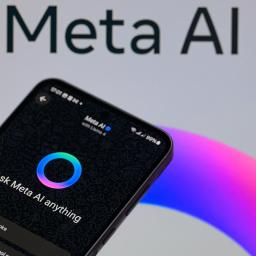 |
by Karissa Bell on (#6ZNJT)
Meta is re-training its AI and adding new protections to keep teen users from discussing harmful topics with the company's chatbots. The company says it's adding new "guardrails as an extra precaution" to prevent teens from discussing self harm, disordered eating and suicide with Meta AI. Meta will also stop teens from accessing user-generated chatbot characters that might engage in inappropriate conversations.The changes, which were first reported by TechCrunch, come after numerous reports have called attention to alarming interactions between Meta AI and teens. Earlier this month, Reuters reported on an internal Meta policy document that said the company's AI chatbots were permitted to have "sensual" conversations with underage users. Meta later said that language was "erroneous and inconsistent with our policies" and had been removed. Yesterday, The Washington Post reported on a study that found Meta AI was able to "coach teen accounts on suicide, self-harm and eating disorders."Meta is now stepping up its internal "guardrails" so those types of interactions should no longer be possible for teens on Instagram and Facebook. We built protections for teens into our AI products from the start, including designing them to respond safely to prompts about self-harm, suicide, and disordered eating," Meta spokesperson Stephanie Otway told Engadget in a statement."As our community grows and technology evolves, we're continually learning about how young people may interact with these tools and strengthening our protections accordingly. As we continue to refine our systems, we're adding more guardrails as an extra precaution - including training our AIs not to engage with teens on these topics, but to guide them to expert resources, and limiting teen access to a select group of AI characters for now."Notably, the new protections are described as being in place "for now," as Meta is apparently still working on more permanent measures to address growing concerns around teen safety and its AI. "These updates are already in progress, and we will continue to adapt our approach to help ensure teens have safe, age-appropriate experiences with AI," Otway said. The new protections will be rolling out over the next few weeks and apply to all teen users using Meta AI in English-speaking countries.Meta's policies have also caught the attention of lawmakers and other officials, with Senator Josh Hawley recently telling the company he planned to launch an investigation over its handling of such interactions. Texas Attorney General Ken Paxton has also indicated he wants to investigate Meta for allegedly misleading children about mental health claims made by its chatbots.This article originally appeared on Engadget at https://www.engadget.com/social-media/meta-is-re-training-its-ai-so-it-wont-discuss-self-harm-or-have-romantic-conversations-with-teens-182418587.html?src=rss
|
 |
by Ian Carlos Campbell on (#6ZNJV)
IFA, Europe's answer to the CES, kicks off on September 5 in Berlin, Germany. The show likely won't be the biggest source of news in September - Apple's iPhone launch event is officially happening on September 9 - but it is usually home to its fair share of announcements. IFA 2024 featured new "AI PCs" from ASUS and Dell, including the first Inspiron laptop with Qualcomm's Snapdragon X Plus chip. There were plenty of more unusual ideas, too: Honor used the show to introduce a laptop with a detachable webcam, for example.Based on the companies that are confirmed to have presence at the show, similar themes will be woven through IFA 2025. AI and features enabled by it will likely be everywhere, especially in home appliances. Laptops, whether they're running Intel's Panther Lake chips or something Arm-based, are sure to be in the mix. And smart glasses will likely continue to be a going concern. Below are the companies who are confirmed to be holding events at the show, and what we think they might announce.SamsungSamsungWith the Galaxy S25, Galaxy Z foldables and Galaxy Watch 8 in the rear view, there aren't many personal electronics Samsung has left to announce this year. That could be why the company's IFA press conference seems focused on the smart home. Samsung's IFA presentation, dubbed "AI Home: Future Living, Now" is supposed to be focused on the company's home appliances. Specifically, Samsung says it will "highlight the transformative potential of AI in the home." Samsung already showed off how AI plays into its new Bespoke AI home appliances at CES 2025, so it's possible the company could have new additions to the lineup. It'll hopefully also share when its Ballie robot will be available for purchase.We also know for a fact that Samsung is hosting a virtual Unpacked event on September 4, which could point to some other products the company will show off at IFA 2025. All signs point to the next Unpacked being about tablets and midrange phones. Samsung is rumored to be announcing both the Galaxy Tab S11 and S11 Ultra, which will carry over the general look and feel of the company's past tablets with a few important tweaks, according to WinFuture. Besides battery improvements and Android 16, the biggest change Samsung is reportedly making is using a MediaTek Dimensity 9400 chip in the tablets rather than its own Exynos models or something from Qualcomm. The Snapdragon 8 Elite is considered the top of the line, so opting for MediaTek could raise questions about performance, but we'll have to use the tablets to know for sure.Samsung is also rumored to be announcing the Galaxy S25 FE at the event. It becomes less clear by the year what "FE" or "Fan Edition" means, but the Galaxy S25 FE is expected to have some meaningful improvements over the Galaxy S24 FE. Alongside a Samsung-designed Exynos chip, the S25 FE is rumored to feature an improved 12MP selfie camera and a 4,900mAh battery with 45W charging, according to SamMobile.AcerSam Rutherford for EngadgetLike Samsung, Acer is hosting its own press conference at IFA 2025. The company's description of the event is frustratingly vague, but does suggest announcements focused on both productivity and gaming. At IFA 2024, Acer introduced multiple Copilot+PCs, including updates to the company's Swift and Aspire lines with the latest Intel Core Ultra chips and Windows AI features. Updates to both lineups seem highly likely at IFA 2025. Don't be surprised if Acer shows off some more concept devices, too. The company's Acer Project DualPlay, a laptop with a detachable game controller, was a big hit at last year's show, and something the company is bound to top.When it comes to handheld gaming PCs, Acer's detailed its plans to sell three different sizes of handheld, the Acer Nitro Blaze 11, Blaze 8 and Blaze 7, but yet to release them all globally. It might make sense to use IFA 2025 to finalize that and tease whatever it's working on next.LenovoSam Rutherford for EngadgetWhen it comes to Lenovo, the company has a tried and true playbook for events like IFA. It demoes a slew of new laptops, updates its non-foldable Motorola phones and introduces one or two absolutely bizarre concept devices. The pattern seems like it'll repeat for IFA 2025.If the stars of last year's show were a 16-inch Legion gaming laptop and an "Auto Twist" concept that swivels with a voice command, this year Lenovo's looking at a different kind of rotation. Leaker Evan Blass shared images at what looks like a new concept laptop with a display that can be rotated into portrait orientation. Blass also shared images of three new Moto phones, and two new Lenovo tablets.
|
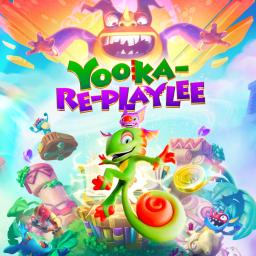 |
by Lawrence Bonk on (#6ZNJW)
Yooka-Replaylee, the remaster of the platformer Yooka-Laylee, will be available on October 9. It'll be playable on PC, Xbox Series X/S, PS5 and Switch 2. It's getting both a digital and physical release, and preorders for the physical versions are up right now.Speaking of physical copies, the Switch 2 version will include the full game on the cartridge and no game-key card. Nintendo has given developers the option to release cartridges that are basically empty shells, called game-key cards, that require an immediate download upon being slotted in the console. Collectors aren't exactly keen on this practice, so an actual cartridge release for Yooka-Replaylee is a welcome bit of news.This is a remade and enhanced version of Yooka-Laylee, which was itself an homage to 3D collectathon platformers like Banjo-Kazooie. Developer Playtonic is staffed with people who worked on Rare titles like the aforementioned Banjo and the Donkey Kong Country games.Yooka-Replaylee brings some new features to the table, including updated challenges, a fully orchestral soundtrack and, of course, more stuff to collect. There's also a bigger map, a refined story and enhanced graphics. It looks pretty nifty.The digital version of the game will cost $30, while physical copies will cost $50. There's a promotion going for long-time fans, as those who already own the game will get 30 percent off so long as they buy the remaster on the same platform family as the original. This means Switch to Switch 2, PS4 to PS5 and Xbox One to Xbox Series X/S.This article originally appeared on Engadget at https://www.engadget.com/gaming/yooka-laylee-remaster-comes-to-consoles-and-pc-on-october-9-180052250.html?src=rss
|
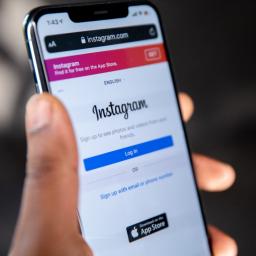 |
by Lawrence Bonk on (#6ZNJX)
Big-time creators on Instagram just got a bit of welcome news. The platform is introducing inbox management tools to make it easier for influencers to wade through endless messages and requests.The tools include multi-select filters that let users sort through messages faster to find important correspondences. Remember, popular creators are getting hundreds upon hundreds of messages each day. The software lets these influencers add, edit or remove any filter, which should be helpful.
|
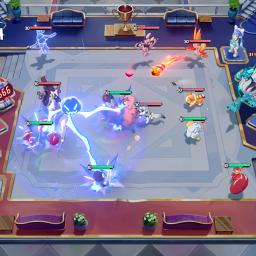 |
by Will Shanklin on (#6ZNJY)
HoYoverse's next gacha game has shades of Teamfight Tactics and Pokemon. The developer describes Honkai: Nexus Anima as a "creature-collector adventure strategy game." HoYoverse first teased the title in May at the Honkai: Star Rail Concert 2025.In Honkai: Nexus Anima's game world, a sudden rupture has shattered the balance between opposing forces (Nexus). You'll explore the realm, forging bonds with the resulting creatures (Anima) scattered about. It sounds like gameplay will revolve around auto-chess, pet-training mini-games and world hub exploration.Honkai: Nexus Anima is still in development, so a release date hasn't yet been announced. But HoYoverse will soon conduct a closed beta (the Nexus Bond Test) on Windows and iOS. You can visit the registration page until September 12 if you want to give it a shot.This article originally appeared on Engadget at https://www.engadget.com/gaming/hoyoverses-star-rail-spinoff-is-honkai-nexus-anima-173638312.html?src=rss
|
 |
by Andre Revilla on (#6ZNGF)
Despite some fallout between President Trump and Elon Musk, the White House appears to still be in Musk's corner. Wired is reporting, based on documents obtained by the outlet, that the White House allegedly directed leadership at the General Services Administration (GSA) to include xAI's Grok on its list of approved AI vendors.xAI is owned by Elon Musk and was not included in the slew of approvals the GSA issued in August that saw the agency add OpenAI, Google and Anthropic to its list of vendors. In emails sent last week and published by Wired, agency leadership demands xAI's products be included. "Team: Grok/xAI needs to go back on the schedule ASAP per the WH," writes Josh Gruenbaum, commissioner of the Federal Acquisition Service, one of the branches of the GSA. Should be all of their products we had previously (3 & 4)," likely referring to Grok 3 and Grok 4, which are iterations of xAI's LLM chatbot.Carahsoft, a major government contractor that resells technology from third-party firms, is mentioned. "Can someone get with Carahsoft on this immediately and please confirm?" wrote Gruenbaum. According to Wired, Carahsoft's contract was modified to include xAI earlier this week. As of Friday morning, both Grok 3 and Grok 4 are available on GSA Advantage, an online marketplace where government agencies can purchase products and services.xAI announced a version of Grok for US government agencies in July, when it appeared that GSA approval for the chatbot was all but certain. Shortly beforehand, the chatbot went off the rails and started spouting Nazi propaganda and antisemitic rhetoric while dubbing itself "MechaHitler." This came in the wake of Musk and Trump's public spat over the president's spending bill, after which GSA approval of Grok seemed to stall. Why the change in directive now is unclear.There were no details in the reporting regarding pricing or whether xAI will be offering discounted services to the federal government. Earlier this month, both OpenAI and Anthropic began offering their large language models to federal agencies for just $1 in an effort to drive adoption among the government workforce. xAI still holds a $200 million contract with the Pentagon to develop AI workflows within the US Department of Defense.These AI models have been in the hot seat lately as increasingly disturbing cases of hallucinations and errant behavior have arisen. Just this week, OpenAI is facing a wrongful death lawsuit alleging that ChatGPT spent months discussing and ultimately enabling the suicide of a teen boy.This article originally appeared on Engadget at https://www.engadget.com/ai/the-white-house-reportedly-ordered-xais-grok-to-be-approved-for-government-use-165625891.html?src=rss
|
 |
by Lawrence Bonk on (#6YSRY)
Microsoft just launched a service for Xbox Insiders that brings all cloud-playable games, along with play histories, to the official Xbox PC app. This includes console exclusives spanning multiple generations and hundreds of other releases. The service extends to games owned by the player and Game Pass titles.The big hook here is that recently-played games will follow people across devices, including Xbox consoles, PCs and Windows handhelds. This will make it easier for folks to jump back into something, even when going from, say, an Xbox Series X to a PC.Xbox The new "play history" section of the PC app and Xbox console UI will display cloud games as recently-played titles, and this list follows people wherever they go. It includes cloud-powered game saves, so there will be no wasted time. Being as this is all part of Xbox Cloud Gaming, players will be able to start a game on a console and finish on a PC, even if that title isn't available natively on the second platform.There's also a new search filter in the library section for cloud games, along with a "jump back in" list on the home screen of the app. While the large tiles highlight games you've recently played on your current device, the play history tile shows games you've played across any Xbox device, making it easy to pick up where you left off," the company wrote in a blog post.This is all thanks to the redesigned library feature for the Xbox app. This allows games purchased from various platforms to all be launched from the same place.Update, August 29 2025, 12:05PM ET: Microsoft has confirmed that cross-device and cloud-playable play history is now rolling out to everyone, following a successful testing phase for Xbox Insiders. If you're playing on an Xbox console, you'll find the play history tile on your home page, while on the Xbox PC app it sits under the Most Recent section in the sidebar menu, as well as in its dedicated tab in My Library.This article originally appeared on Engadget at https://www.engadget.com/gaming/xbox-cloud-games-will-soon-follow-you-just-about-everywhere-183603601.html?src=rss
|
 |
by Mariella Moon on (#6ZBC0)
Google has started rolling out customizable calling cards for the beta versions of its Android Contacts and Phone apps. Android Authority found clues that the company was working on the feature back in July when it did an APK teardown. Now, you can give it a try if you decide to install the beta versions of the apps. As the publication notes, Google's implementation is the direct opposite of Apple's. On iOS, your set your own photo and name that you want to show up on other people's phones when you call them. You cannot alter other people's Contact Posters, as Apple calls the feature. Meanwhile, on Android, you can't make your own calling card. The feature instead gives you a way to set a photo and a name for your contacts that show up on your screen when they call you.If you do have access to the beta Contacts app for Android, you'll now see a note that says "Try adding a calling card" when you view a contact's details. From there, you can choose a photo you have of that contact from your gallery or take a new one of them with your camera. You can also adjust the font type and color for their name. Whenever they call, that calling card will take over your phone screen. If this sounds nothing new to you, it may be because Samsung has had a profile card feature for a while now that works just like Google's implementation. It's already widely available and accessible from your contacts' profile pages.Update, August 29 2025, 10:11AM ET: Google has announced that its Calling Cards feature is now rolling out to Android users worldwide. Once you've updated your Google Phone app to version v188, you'll be able to set a full-screen picture that appears for all outgoing and incoming calls. Google says the feature will be made available in phases, so you might not get it straight away.This article originally appeared on Engadget at https://www.engadget.com/mobile/smartphones/google-is-testing-customizable-calling-cards-for-android-that-show-up-when-your-friends-call-123038875.html?src=rss
|
 |
by Steve Dent on (#6ZNAR)
YouTube TV subscribers won't have to worry about missing key college football games and other Fox content after the two sides struck a deal yesterday. "We're happy to share that we've reached an agreement with Fox to keep their content on YouTube TV," the Alphabet-owned company wrote on its blog.Earlier this week, YouTube TV warned subscribers that they could lose access to Fox content including the start of the NFL season and a key college football game between top-ranked Texas and Utah. The standoff was over money, of course, with YouTube TV saying Fox demanded more of it than rival stations with comparable offerings.That has now been resolved with a "renewal of the full portfolio of Fox networks, including Fox News Channel, Fox Business Network, Fox Weather, Fox Sports, FS1, FS2, Fox Deportes, Big Ten Network, the Fox network and all Fox Local Stations," Fox said in its own press release.Such disputes are not unusual and often happen ahead of key sporting events, allowing stations like Fox to ratchet up the pressure on cable operators and live streaming services. In the past, YouTube TV has lost access to local Fox stations that carry regional sports, though usually disputes are extended and resolved before they get that far.Fox has a bit more leverage now, having recently launched the Fox One streaming service that includes all NFL and MLB games aired on Fox networks, for $20 per month or $200 per year. YouTube TV also exclusively offers NFL Sunday Ticket that broadcasts NFL games produced by Fox and CBS that aren't available on local affiliates as an add-on starting at $85 per month. That package was never impacted by the standoff.This article originally appeared on Engadget at https://www.engadget.com/entertainment/streaming/youtube-tv-subscribers-wont-lose-access-to-fox-content-after-all-130054330.html?src=rss
|
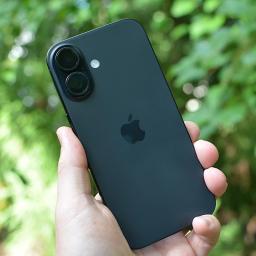 |
by Mariella Moon on (#6ZNAS)
The UK's Investigatory Powers Tribunal (IPT) has submitted a new legal filing, suggesting that authorities wanted the iCloud backdoor they're demanding Apple to create to be able to access more data than previously thought. According to the Financial Times, UK's Home Office has also yet to legally withdraw or change its order for Apple to create backdoor access to its users' data. If you'll recall, US Director of National Intelligence Tulsi Gabbard claimed a few days ago that the UK "has agreed to drop its mandate for Apple to provide a 'back door' that would have enabled access to the protected encrypted data of American citizens and encroached on [their] civil liberties." It's still unclear if the Home Office merely hasn't started the process of withdrawing the mandate yet.IPT is an independent judicial body that investigates complaints about alleged unlawful surveillance from UK authorities. The Times reported in March that Apple challenged the UK government at the IPT after receiving a secret order from the Home Office to build a backdoor for iCloud data. Apple is not allowed to publicly discuss the order, but it first acknowledgment that it received a mandate from UK authorities when it disabled iCloud's Advanced Data Protection (ADP) feature in the UK back February."Apple remains committed to offering our users the highest level of security for their personal data and are hopeful that we will be able to do so in the future in the United Kingdom. As we have said many times before, we have never built a backdoor or master key to any of our products or services and we never will," the company said in a statement back then. It's worth noting that the UK government has yet to confirm or deny the order's existence, and IPT will be hearing the case based on "assumed facts."The order reportedly states the Apple has the obligation to "provide and maintain a capability to disclose categories of data stored within a cloud-based service," which indicates that the government looked to gain access to people's passwords and messages. In addition, the Times says the order was "not limited to" data protected by Apple's ADP, suggesting that authorities wanted broad access to Apple iCloud accounts.This article originally appeared on Engadget at https://www.engadget.com/big-tech/uks-demand-for-apple-backdoor-may-have-been-broader-than-previously-thought-123009302.html?src=rss
|
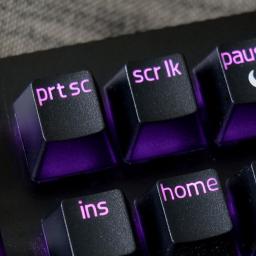 |
by Rob Webb on (#6ZNAV)
Windows offers several built-in ways to take screenshots. Sure, you can just hit the Prt Scrn button on your keyboard to capture your entire screen, but if you want to screenshot a portion of your screen, a particular window, or you have multiple monitors there are other ways you can use Windows to achieve this. Whether you're using Windows 11 or a recent update to Windows 10, the tools remain largely consistent and reliable.This guide walks you through the most useful native screenshot methods, including the Snipping Tool, keyboard shortcuts and clipboard techniques, as well as popular third-party apps for more advanced needs. For more cross-platform tips, you can also check out Engadget's guide on how to take a screenshot on any device.How to use the Snipping Tool for easy screenshotsThe Snipping Tool is the most versatile built-in screenshot option in Windows. It lets you capture specific regions, open windows or the entire screen and includes basic annotation tools. It's available by default on Windows 11 devices, though Windows 10 users can still access the Snipping Tool, despite it being replaced by Snip & Sketch.
|
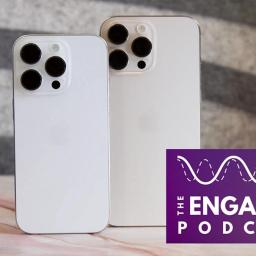 |
on (#6ZN8H)
Now that Apple has scheduled its iPhone 17 event for September 9th, it's time to dive into everything we'reexpecting. In this episode, Devindra and Engadget's Igor Bonifacic chat with Bloomberg's Mark Gurman about his latest Apple scoops. We're expecting an ultra-thin iPhone Air (which may turn out to be a dud), but when will we hear more about Apple's rumored move into robotics and that darned foldable iPhone?
|
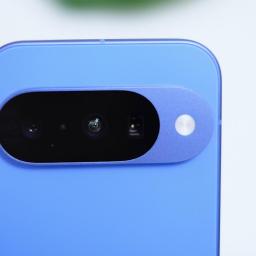 |
by Mat Smith on (#6ZN8J)
We've reviewed half of the Pixel 10 series, and Google continues to improve its phones in very tangible ways. We scored the Pixel 10 Pro 94, which is a high score, but well deserved. With brighter screens, a faster Tensor G5 chip and a bigger battery, a lot of the improvements are software based. Magic Cue uses on-device AI to surface relevant information from apps, reducing app-hopping.EngadgetThe camera app also introduces Camera Coach for shooting directions and to highlight various camera modes. While camera hardware is largely unchanged, the Pixel 10 Pro has a new Pro Res Zoom feature, using generative AI for up to 100x zoom, delivering sharper and just better looking" results than the Samsung Galaxy S25 Ultra's zoom, according to Sam Rutherford, who put the phone through its paces. This year's Pixels also support magnetic Qi2 wireless charging, with what Google calls Pixelsnap. (It's MagSafe for Pixels.)For those seeking a more affordable option, the Pixel 10, reviewed by me, now includes a 5x telephoto lens, surpassing other base flagships, like the S25 (3x) and iPhone 16 (2x), and incorporates all the Gemini features found in the Pro device. Also, I love the new Indigo Blue.Waiting on reviews for the new Pixel Watch and Pixel 10 Pro Fold? Expect those over the next few months - the Pixel 10 Pro Fold is set to be released in October.- Mat SmithGet Engadget's newsletter delivered direct to your inbox. Subscribe right here!The news you might have missed
|
 |
by Mat Smith on (#6ZN8K)
Europe's biggest gameshow is a beast. Spanning the halls of Cologne Messe, and with E3 now out of the picture, Gamescom is a bigger deal than ever. The show also attracts thousands of public attendees, which gives the show a fairground twist in places. This year, Netflix dominated one of the halls with a faux One Piece ship, sports stadium, a Wednesday-themed cafe and a Stranger Things ice cream stall.Elsewhere, while Nintendo didn't have anything new to show, it had plenty of Switch 2 consoles to convince the not-yet-convinced - and some of them had Silksong. Microsoft, too, had a substantial presence, revealing an October 16 launch date for its Xbox Ally duo of handheld gaming PCs. No price, though.While you can find all the news and previews on our Gamescom page, we've also drawn together all the other games we tested during this week's show, several of which launch in the next few weeks.Metal Gear Solid Delta: Snake EaterKonamiWhile the man who created Metal Gear moved onto walking sims and Hollywood best friends, Konami is more than happy to beef up and remaster the hits. This time around, it's Metal Gear Solid 3: Snake Eater.I'll admit, Snake Eater was when I fell off the Metal Gear Solid train (or nuclear mech), and it came undone by the camouflage system and the difficult-to-navigate early areas. A very tight demo, as the Gamescom crowds rushed to early demos meant I didn't get a chance to fully test the new style control system that (thankfully) shifts crouch and action/ confirm to separate buttons and adds a degree of camera control even in third-person. But it's these kind of quality-of-life upgrades you can expect to see.Of course, the graphics are a huge leap from the PS2 original (or Nintendo 3DS version I bafflingly chose to buy), but the pulpy (occasionally delightfully camp) dialogue remains in place. I look forward to getting through at least the opening scenes now that the game has launched on PlayStation 5, Windows, and Xbox Series X/S.There Are No Ghosts at the GrandMicrosoftWhat a weird game. Not in a bad way. Things start off in the titular dilapidated Grand Hotel, with me renovating a room with PowerWash Simulator-inspired water guns, spray guns, sand blasters and vacuum. You can scan the area to get hints on what needs doing, while a naggy Scottish smartphone app will also try to help - but not really. There's also a talking cat, apparently, called Mr. Bones the Bastard, but he wasn't talking in this demo.The early trailer teased a mystery that needs to be solved in the village, and while I didn't get a glimpse of that, I was soon tasked with checking out some mysterious black gunk.The developers even put a little more effort into the demo, with voiced lines that will likely never be heard in the retail version, teasing that the protagonist was being onboarded" when he's interrupted by one of the characters that populate the village around the hotel.Seconds later, I'm riding a scooter to the dock, with a cat enjoying the ride, fixing a boat, getting a sassy soliloquoy from the woman who convinced me to drive my boat into the sea. There are plenty more songs to come as new characters join the mystery.As a reminder, the demo started with me sandblasting tatty wallpaper off period walls. I'm intrigued.While Hideo Kojima, the creator of Metal Gear, moved on to walking sims and Hollywood collaborations, Konami is more than happy to revamp and remaster its hits. This time, it's Metal Gear Solid 3: Snake Eater.I'll admit, Snake Eater was when I fell off the Metal Gear Solid train. It came undone at the difficult-to-navigate early areas and the camouflage system. A very tight demo, as the Gamescom crowds rushed to early demos, meant I didn't get a chance to fully test the new style control system that (thankfully) shifts crouch and action/ confirm to separate buttons and adds a degree of camera control even in third person. But it's these kinds of quality-of-life upgrades you can expect to see.Of course, the graphics are a huge leap from the PS2 original (or Nintendo 3DS version I bafflingly chose to buy), but the pulpy (occasionally delightfully camp) dialogue remains in place. I look forward to getting through at least the opening scenes now the game has launched on PlayStation 5, Windows and Xbox Series X/S.Resident Evil RequiemWe've got a more detailed breakdown by contributor Alessandro Fillari here, but I got a chance to get scared out of my skin too. The headline feature is the ability to play between first- and third-person perspectives. Still, it revealed an uncomfortable truth to myself: I'm a total coward and playing in third person is much less scary.Onimusha: Way of the SwordCapcomCapcom's return to its samurai vs. demons series is satisfying and fun, especially when compared to more punishing games in the genre, like Sekiro. However, the early chapters have a pretty basic attack flow, and I'm keen to see how things evolve beyond that. At least they've got one thing right: a great villain to loathe.Silksong: Hollow KnightThe long-running DLC-into-sequel-into-meme-sensation is almost here, right? The demo at Gamescom remained the most popular attraction at Microsoft's booth. Two Xbox Ally handhelds were also running the demo, which I was fortunate enough to test on. And I can say... yep, still plays like a faster, slicker Hollow Knight.Having played it a heady six years ago, it's now actually difficult to discern the differences between the early build and what is surely an almost-final snapshot of the game. One of the notable changes is its more elaborate lighting effects and details - things Redditors have pored over as each new trailer video appeared. I stand by my hands-on impressions from 2019, even if they have a fine vintage at this point.But when is it coming out? Oh, September 8.All the announcements from Gamescom 2025
|
by Valentina Palladino,Amy Skorheim on (#6E4KV)
Your Apple MacBook is already a powerful, sleek machine - but the right accessories can make it even better. Whether you're trying to expand its ports, improve your workspace or boost your productivity on the go, there's no shortage of helpful add-ons designed specifically with Apple products in mind. From USB-C hubs and external drives to stands, keyboards and protective sleeves, the best MacBook accessories help you get more out of your laptop without sacrificing style or portability.
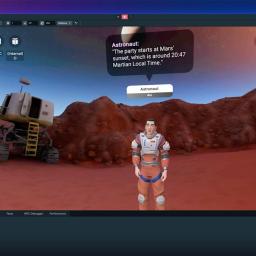 |
on (#6ZMYV)
Developers building for Meta's metaverse platform will soon be able to create AI-powered NPCs for Horizon Worlds. The company previewed the move, which is coming very soon" as part of a developer update that adds new generative AI tools for developers.Once available, developers will be able to use Meta's Worlds Desktop Editor to create NPCs that can hold lifelike" conversations with players via voice chat. The company has previously experimented with NPCs for its metaverse, but the upcoming update will be the first time developers have access to customizable embodied characters.For players, this means the NPCs they encounter will be able to engage more dynamically and respond to specific interactions rather than only relying on scripted responses. In a blog post, Meta shared a video that shows how developers can customize their characters' appearance and create a backstory and instructions that determine how it responds to players.The update is the latest way that Meta has been steadily merging its AI and metaverse ambitions. And given that its Connect event is just a few weeks away, there's a good chance we'll hear more about how generative AI is changing Meta's virtual worlds very soon. In the meantime, anyone who wants to see some of these new AI NPCs in action can check out characters in Bobber Bay Fishing and Profit or Perish.This article originally appeared on Engadget at https://www.engadget.com/social-media/meta-is-bringing-ai-powered-npcs-to-the-metaverse-231605236.html?src=rss
|
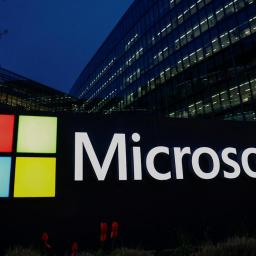 |
by Anna Washenko on (#6ZMTP)
Microsoft is expanding its AI footprint with the release of two new models that its teams trained completely in-house. MAI-Voice-1 is the tech major's first natural speech generation model, while MAI-1-preview is text-based and is the company's first foundation model trained end-to-end. MAI-Voice-1 is currently being used in the Copilot Daily and Podcast features. Microsoft has made MAI-1-preview available for public tests on LMArena, and will begin previewing it in select Copilot situations in the coming weeks.In an interview with Semafor, Microsoft AI division leader Mustafa Suleyman said the pair of models was developed with a focus on efficiency and cost-effectiveness. MAI-Voice-1 runs on a single GPU and MAI-1-preview was trained on about 15,000 Nvidia H-100 GPUs. For context, other models, such as xAI's Grok, took more than 100,000 of those chips for training. "Increasingly, the art and craft of training models is selecting the perfect data and not wasting any of your flops on unnecessary tokens that didn't actually teach your model very much," Suleyman said.Although it is being used to test the in-house models, Microsoft Copilot is primarily built on OpenAI's GPT tech. The decision to build its own models, despite having sunk billion-dollar investments in the newer AI company, indicates that Microsoft wants to be an independent competitor in this space. While that could take time to reach parity with the companies that have emerged as forerunners in AI development, Suleyman told Semafor that Microsoft has "an enormous five-year roadmap that we're investing in quarter after quarter." With some concerns arising that AI could be facing a bubble-pop, Microsoft's timeline will need to be aggressive to ensure taking the independent path is worthwhile.This article originally appeared on Engadget at https://www.engadget.com/ai/microsoft-introduces-a-pair-of-in-house-ai-models-193003900.html?src=rss
|
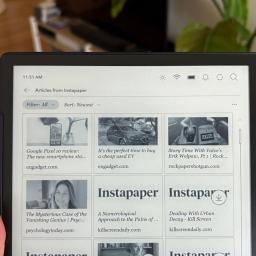 |
by Ian Carlos Campbell on (#6ZMTQ)
Rakuten and Instapaper have announced a new integration that lets you access saved articles on Kobo ereaders. The new feature replaces a similar one Rakuten used to offer for Pocket users, which it was forced to replace after Mozilla decided to shut down the read-it-later service in May 2025.Instapaper on Kobo devices works nearly identically to the way Pocket did previously. With your Instapaper account linked, you can access any article you've saved to your library. Articles can be downloaded and accessed offline, and you can like, delete or archive them as you see fit. As someone who relied on the Pocket integration to work my way through a ridiculous backlog of saved articles, Instapaper makes a capable replacement. Really, the only thing the feature is missing at this point is support for handwritten annotations on Kobos with styluses, like the Kobo Libra Colour or Kobo Elipsa 2E.Mozilla made the decision to wind down Pocket and a few other smaller products to conserve time and resources that might be better spent on Firefox. Instapaper itself was in decline following an acquisition by Pinterest in 2016, until the developers working on the service bought it back and took Instapaper independent in 2018.Pocket and Instapaper aren't one-to-one replacements for each other (Instapaper seems much less concerned with preserving images, for example) but they're close. For anyone who relied on Pocket, Rakuten replacing the service with Instapaper is a best-case scenario. The new Instapaper integration is available globally on all currently supported Kobo ereaders.This article originally appeared on Engadget at https://www.engadget.com/mobile/tablets/kobo-ereaders-are-swapping-out-pocket-for-instapaper-190615508.html?src=rss
|
 |
by Andre Revilla on (#6ZMRG)
More than 450 Diablo developers at Blizzard Entertainment have voted to unionize with the Communications Workers of America (CWA). The union will represent employees across multiple disciplines including designers, engineers, artists and support staff. This comes after a slew of layoffs in the gaming division at Microsoft, Blizzard's parent company, as well as across the industry at large.The Diablo team isn't the first to unionize at the tech giant. ZeniMax QA workers reached a union contract with Microsoft after two years of negotiations, and Blizzard's Story and Franchise Development team voted to unionize earlier this month. Both are part of the CWA, which also helped the developers behind Overwatch unionize earlier this summer.Kelly Yeo, a Diablo game producer and organizing committee member, said that the mass layoffs at Microsoft were a major motivating factor in the unionization. "With every subsequent round of mass layoffs, I've witnessed the dread in my coworkers grow stronger because it feels like no amount of hard work is enough to protect us," she said. "This is just the first step for us joining a movement spreading across an industry that is tired of living in fear."CWA says that more than 3,500 Microsoft workers have organized with the union. Earlier this year, video game workers announced the formation of the United Videogame Workers-CWA, an industry-wide union for workers in the US and Canada.This article originally appeared on Engadget at https://www.engadget.com/gaming/over-450-diablo-developers-at-blizzard-have-unionized-180544383.html?src=rss
|
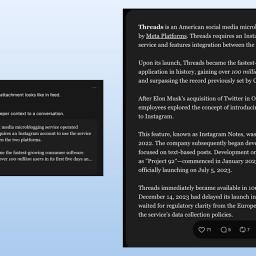 |
by Karissa Bell on (#6ZMRH)
Meta seems to be working on ways for Threads users to share long-form writing within a single post. Several users have reported seeing a new "attach text" feature on the service, which allows them to embed large chunks of text within a single post.The feature, which hasn't been formally announced by Meta, is similar to the "articles" feature that's available on X to Premium+ subscribers. It enables Threads users to embed longer text excerpts within a single Threads post and offers some basic formatting options. "Attach longer text and get creative with styling tools to share deeper thoughts, news snippets, book excerpts and more," Meta explains in a screenshot shared byThreads user Justin Mixon.Though the feature hasn't been rolled out widely yet, it appears that anyone can view these longer text snippets that have already been shared. On mobile, these attachments open into a full-screen view that makes it easy to scroll through the text. On threads.com, text appears in a dedicated window. (Here are a couple examples shared by Threads user Roberto Nickson.)Threads Screenshot It's not clear what Meta's plans are for the feature. Engadget confirmed the company is currently testing the ability to share long-form text, but it's not clear when it might be more widely available. The ability to embed long-form writing directly on Threads could open up new possibilities for creators, publishers and others who want to move beyond the service's 500-character limit.Engadget's reporting has found that the vast majority of Threads users don't click on links in posts, so giving users more flexibility within Threads itself could be helpful. At the same time, it risks making the 400-million user service even more insular. It's also worth noting that screenshots currently indicate posts with text attachments aren't able to be shared to services within the fediverse, which could potentially undermine Meta's goal to be interoperable with other ActivityPub-enabled platforms like Mastodon.This article originally appeared on Engadget at https://www.engadget.com/social-media/meta-is-experimenting-with-long-form-text-on-threads-175557130.html?src=rss
|
 |
by Will Shanklin on (#6ZMRJ)
Fubo is making a move to attract new subscribers ahead of the NFL season. The company's new Fubo Sports bundle includes content from ESPN, Fox and local affiliates. The football-friendly package costs $56 monthly.Fubo Sports includes over 20 sports and broadcast networks. You get all of ESPN's live channels (including ESPN+). As for Fox, it has FS1, FS2 and the curious inclusion (for a sports package) of Fox News. The bundle also has the ACC Network, Big 10 Network, CBS Sports Network, Fubo Sports Network, ION, NFL Network, SEC Network and the Tennis Channel.Additionally, Fubo Sports has local broadcast stations owned and operated by ABC, CBS and Fox. The company says additional affiliates will be available in select markets.Fubo says some content will be available in 4K. It will support VOD, Unlimited DVR and Family Share features.FuboYou can argue that Fubo's new sports package is the best value for football fans. At $56, it's pricier than the upcoming ESPN and Fox One bundle. (It arrives on October 2 for $40.) By comparison, Fubo's package includes all the same sports channels, as well as local stations (and more). NFL and college football fans subscribing to this could also likely skip Paramount+'s sports content. The football completist would only need to add Peacock for NBC's Sunday night games and Amazon Prime for its Thursday night matchups.Confused? Well, you aren't alone. In many ways, live TV streaming has become at least as convoluted as the cable TV it once promised to improve upon. Start with something simple, insert high stakes for wealthy corporations and watch a complex web of head-spinning shit come out the other side.Regardless, starting next week, you can try Fubo Sports for $46 for your first month. After that, it defaults to the standard $56. The bundle arrives on September 2, two days before the NFL season kicks off.This article originally appeared on Engadget at https://www.engadget.com/entertainment/streaming/fubo-sports-will-make-a-play-for-football-fans-dollars-on-september-2-164847466.html?src=rss
|
 |
by Igor Bonifacic on (#6ZMN4)
The RX1R III is an incredible camera, capable of capturing stunning photos. However, for something Sony waited nearly a decade to update and is charging $5,100 for, it also feels like a missed opportunity. First, the RX1R III is nearly $2,000 more expensive than its predecessor. Plus, it's missing a handful of features the company really should have included for it to hold its own against other high-end compact cameras, including Fujifilm's X100VI and GFX100RF, as well as the Leica Q3 family. I love the RX1R III, but I wish it was easier to recommend. Image quality and autofocus Igor Bonifacic for Engadget New to the RX1R III is a 61-megapixel full-frame sensor Sony first introduced alongside the A7R IV back in 2019. It might be an old component, but having so much resolution in a camera I could carry everywhere felt like cheating. What hasn't changed is the glass on the RX1R III. The camera still has the same fixed 35mm f/2.0 Zeiss lens that debuted on the original RX1R in 2012. With past models, autofocus was often an issue, but it turns out the Zeiss lens wasn't to blame. It was the focusing algorithms on the older cameras. Like the A7R V, the RX1R III comes with Sony's flagship Bionz XR image processor and a dedicated chip for AI-assisted subject detection. At first, I was skeptical of the RX1R III's autofocus capabilities since the camera doesn't come with a joystick to make it easy to set a focus point manually. As it turns out, it doesn't need one. The autofocus on the RX1R III feels magical, thanks to its subject tracking. The seven different recognition modes offered by the RX1R III cover most of the things I like to shoot - including people, pets and birds - and getting the camera to lock onto a subject was simple. All I had to do was press and hold the new "AF-ON" button. The camera can be configured to prioritize specific subjects, but I found that wasn't necessary to do; I could delegate focusing entirely to the camera. All of that brings me back to the RX1R III's Zeiss glass. I know some people will be disappointed Sony didn't add a new lens, but I'm a fan of the decision. For me, the character of that lens has always been part of the appeal of the series, and it's my favorite aspect of the new model. With Sony's 61MP sensor behind it, the Zeiss optics can capture photos with a great amount of detail without ever feeling clinical or overly sharp like with many of the company's G Master lenses. The best way I can describe the rendering is that it's Leica-like with beautiful, creamy bokeh. With the right light, the RX1R III can produce images that look almost painterly, and reviewing the photos I snapped with it, they're among some of the best I've captured in the 10 years I've been shooting. At the same time, I think Sony deserves credit for greatly improving the color science of its JPEGs. The company has long offered excellent RAW support, but the older I get, the more I appreciate a camera that can produce great images with minimal editing. With the RX1R III, Sony has delivered that. The camera offers a total of 12 JPEG profiles with six custom slots. Two of the default profiles, Film 2 and Film 3, are borrowed from the FX3, and offer calming, muted tones that are a nice contrast to the more vivid colors Sony is typically known for. As for video, there's not much to say. The RX1R III can capture 4K footage at 60 frames per second and 1080p clips at 120 fps. That said, as I'll get to in a moment, Sony's new model is missing some features that would have made it a competent video camera. As things stand, I think it's only suited for capturing home videos you don't plan to share with the world. Design and handling Igor Bonifacic for Engadget The first time I looked through the RX1R III's viewfinder, I thought Sony had sent me a defective unit. The redesigned EVF is now built into the top left of the camera, but the company seems to have pulled the screen from the parts bin, as it only offers 2.36 million dots of resolution. For context, the A7R V has a 9.44-million-dot OLED EVF, while the older A7R IV has a 5.76-million-dot screen. It's jarring going from the new rear-panel LCD and viewfinder. It also feels cheap. A $5,100 camera should include a top-of-the-line EVF. The viewfinder is not the only part of the RX1R III that left me confused about what Sony was thinking. There's the rear screen I just mentioned, which is both better and worse than the one before. On the one hand, it offers nearly double the resolution, thanks to its 2.36-million-dot panel. On the other hand, it's no longer articulating, which feels like a major step back since it makes shooting candid shots from the hip a lot harder. And forget about vlogging or taking selfies. Separately, Sony hasn't weather-sealed the III. Again, that's a feature I'd like to see on such an expensive camera. Thankfully, battery life is improved, with the RX1R III supporting Sony's larger NP-FW50 batteries. I could comfortably get a day of shooting out of the latest model if I was good about powering off the camera when I wasn't using it. I could overlook all the complaints I mentioned if Sony had just added in-body image stabilization (IBIS). When I reviewed the Fujifilm X100VI last year, that feature alone felt transformational. More than just improving image quality, it made the X100VI into a camera that could shoot in nearly any light. I understand Sony likely wanted to keep the III small and light, but again, $5,100 is a lot to pay to not have a feature that many high-end cameras offer. Wrap-up I've mentioned a few of the RX1R III's competitors in passing, but now I think it makes sense to consider where Sony's new camera fits in the market. Most people shopping for a premium compact camera will probably start their search with the X100VI. If you can find one in stock, it's significantly cheaper than the RX1R III, coming in at $1,800. Sure, you're forgoing a full-frame sensor for a smaller APS-C sensor. But for most people, I think that's a fair tradeoff, especially when the X100VI also offers IBIS, an articulating screen, an optical viewfinder and Fujifilm's excellent color simulations. If you want the largest possible sensor, I'd argue Fujifilm's GFX100RF, which has a medium-format 100MP sensor, makes more sense - even with all of its faults and a price increase coming at the end of the month. There are also the Leica Q3 and Q3 43 to consider. At $6,735 and $7,380 respectively, both are more expensive than the RX1R III, but come with nicer displays, IBIS and Leica glass. Like I said at the start, I wish the RX1R III was easier to recommend, but it occupies a strange space where it's not necessarily better or different enough from its rivals. Inflation and Trump's tariffs likely tied Sony's hands to a degree, but the company could have still made the new model more compelling by avoiding some of its questionable design decisions.This article originally appeared on Engadget at https://www.engadget.com/cameras/sony-rx1r-iii-review-waiting-10-years-to-be-underwhelmed-160036397.html?src=rss
|
 |
by Billy Steele on (#6ZMN5)
Bose announced its latest earbuds in June, but the QuietComfort Ultra Earbuds (2nd gen) ($299) won't arrive until early September. Today, though, they're available for preorder, and I've spent the last few weeks testing all the new features. This model is an overhaul of the noise-canceling earbuds the company debuted in 2023 alongside its take on spatial audio. Among the upgrades, Bose has improved the active noise cancellation (ANC) performance, enhanced call quality and added wireless charging to the case. Two years later, the QuietComfort Ultra is still the best option for those primarily concerned with blocking distractions, and Bose's tweaks make its best earbuds even better. What's new on the QuietComfort Ultra Earbuds (2nd gen)? The new QC Ultra Earbuds are at their best in Quiet mode. This is Bose's option for full noise cancellation without spatial audio (or Immersive Audio, as the company calls it). Here, there's no doubt these are still the best noise-cancelling earbuds available right now. The first-gen version achieved the same feat, but Bose has gone a step further to enhance its ANC setup for this refresh. Specifically, the company updated the algorithm for its ActiveSense technology in Aware (transpancy) Mode. Now the QC Ultra Earbuds offer smoother changes in ANC levels to combat sudden spikes in ambient noise. This means things like sirens should no longer drown out your music or podcast. Unfortunately, I wasn't able to trigger the retooled adaptive ANC with simulated police sirens from YouTube - the best option on my quiet cul-de-sac - but I'll report back if I notice any oddities here. Bose also upgraded call quality on the QC Ultra Earbuds. The company says a new AI-powered setup, known as SpeechClarity, works with the earbuds' eight microphones, dynamic mixing and adaptive filters" to focus on your voice. Bose explains that it uses audio augmentation tech that was originally developed for hearing aids here, which can reduce background noise like wind or the drone of an office. During my tests, the revised system silenced a noisy fan, rendering it completely absent from my recordings. However, overall voice quality suffers as you will sound a bit staticky when all the audio processing kicks in. Thankfully, you no longer need an additional accessory for wireless charging on the QC Ultra Earbuds. With the first-gen model, you had to buy a separate cover to enable cable-free recharging. Bose has now built all of that into the case for the second-gen set, a welcome upgrade that really should've been here from the start. When the original QC Ultra Earbuds debuted in 2023, wireless charging was certainly already the norm. What's still great about the QuietComfort Ultra Earbuds (2nd gen)? Billy Steele for Engadget As I mentioned, the overall ANC performance of the QC Ultra Earbuds remains unmatched. If you're looking to block out distractions, this is the best option that still offers great sound quality. Bose even manages to cancel out human voices better than most of its rivals, which can be a struggle for much of the competition. Audio quality on these earbuds remains near the top of the heap. You won't notice as much detail as Noble Audio's FoKus Rex5 or Technics' AZ100, but there's great clarity here nonetheless. Bose says the tuning was slightly refined" for improved bass response and smoother high frequencies. I noticed that tracks with deep bass, like Deftones' locked club," are clearer at the low end. Meanwhile, treble-forward instruments in songs like Miles Davis' Green Haze" sound crisper and cleaner than before. Despite their larger size, this year's buds offer a surprisingly balanced and comfortable fit. Bose refreshed the ear tips for the QC Ultra Earbuds with a new guard to prevent wax build up. Touch controls are still reliable, and you can disable them entirely on this second-gen version. What's not so good about the QuietComfort Ultra Earbuds (2nd gen)? The biggest gripe I have with the overhaul of the QuietComfort Ultra Earbuds is the lack of improvement to battery life. I was disappointed to see that a better runtime wasn't part of the upgrades when I read the announcement in June, and I'm still not over it. On this model, you'll get up to six hours of use with ANC turned on. Like before, if you listen with that spatial Immersive Audio enabled, that drops to four hours. A couple more hours would've been nice, enough to keep the QC Ultra Earbuds in place for a full work day without having to give them a lunch break in the case. While the design doesn't bother me too much, I know the look of the QC Ultra Earbuds isn't for everyone. There is a bit of a mini Bluetooth headset vibe going on here, and the overall size of the buds are on the larger side when much of the competition is racing to be the smallest. Like I said, none of this impacts comfort or stability, and I'd bet many prospective buyers are willing to live with the aesthetic in exchange for the type of silence the QC Ultra Earbuds deliver. Wrap-up The upgrades on the second-gen QC Ultra Earbuds don't make for a wildly new product, but they do provide enough for a notable improvement over the previous version. ANC and call performance are both enhanced, and though it's late to the party, the addition of built-in wireless charging is a welcome change. Other updates, like the tuning tweaks and the ability to turn off touch controls, are quality-of-life changes that undoubtedly improve the overall experience. Bose has done all of this without changing the price from the 2023 model, which is a surprising choice in the current economic climate. Simply put, the QC Ultra Earbuds remain the best option for wireless noise-cancelling earbuds, and that's not likely to change anytime soon. The Bose QuietComfort Ultra Earbuds (2nd gen) are available for preorder in the US today, August 28. The general on-sale date is scheduled for September 10. This article originally appeared on Engadget at https://www.engadget.com/audio/headphones/bose-quietcomfort-ultra-earbuds-2nd-gen-review-still-a-noise-canceling-powerhouse-153017601.html?src=rss
|
 |
by Kris Holt on (#6ZMHV)
Soon, folks in the UK will be able to check out Apple TV+ series Trying for free (well, other than the cost of a TV license). The BBC has picked up the rights to the first three seasons of the show. The Beeb will broadcast it on TV and stream it on iPlayer starting on September 8.According to Deadline, the deal includes the option for the BBC to pick up more seasons of Trying, which - as it happens - is produced by a commercial arm of the corporation. Apple greenlit a fifth season earlier this year.This marks the first time that the BBC has picked up an Apple TV+ series, but deals such as this aren't uncommon. BBC rival ITV scooped up Apple TV+ series Suspicion earlier this year for its ITVX streaming service. Sales distributor Fifth Season is said to have brokered that deal. Last year, Fifth Season was shopping around other Apple TV+ shows, such as See, Roar and Servant.We've seen other instances of streaming services and production companies taking their projects to other platforms to get some more eyeballs on them and try to earn more revenue. A couple of years ago, Warner Bros. Discovery yanked shows including Westworld from (HBO) Max in favor of streaming them on free, ad-supported platforms. The BBC has also partnered with Disney+ to stream Doctor Who internationally.This article originally appeared on Engadget at https://www.engadget.com/entertainment/tv-movies/apple-tv-sitcom-trying-is-coming-to-the-bbc-144552532.html?src=rss
|
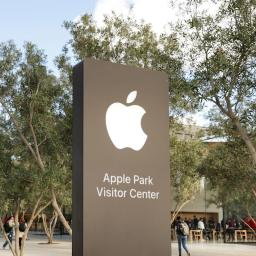 |
by Andre Revilla on (#6ZMHW)
As first reported by TorrentFreak, Apple is preventing downloads of the iTorrent app on iPhones in the EU. Developer Daniil "XITRIX" Vinogradov's app was a popular BitTorrent client available from AltStore PAL, which is among the most popular third-party iOS app stores overseas. The company revoked the app developer's ability to distribute apps on such third-party marketplaces. While Apple has historically banned torrent clients from iOS devices in the United States, the EU's Digital Markets Act that went into effect last year requires Apple to allow apps from third-party stores to be installed by users.According to TorrentFreak's reporting, the motivation behind the revocation of XITRIX's alternative distribution rights is not yet certain. The publisher spoke directly with TorrentFreak and said that Apple never reached out to him about the matter. I still have no idea if it was my fault or Apple's, and their responses make no sense," Vinogradov told TorrentFreak. Apple has responded to Vinogradov with a generic message about app store issues.Shane Gill, the co-founder of AltStore PAL, told TorrentFreak that the company's request for information from Apple has not resulted in it explaining its justification for the takedown. I can confirm that we are in communication with Apple about this issue. We've told them what's going wrong, and they said they're looking into it, but we haven't gotten any further information as of yet," said Gill.This article originally appeared on Engadget at https://www.engadget.com/apps/apple-pulls-torrenting-app-from-a-third-party-store-in-the-eu-143039720.html?src=rss
|
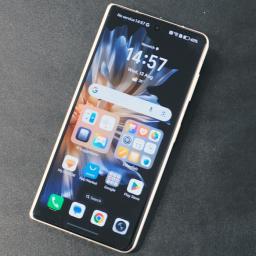 |
by Daniel Cooper on (#6ZMHX)
As soon as I picked up Honor's Magic V5, I was a little concerned about its durability. The fourth generation of Honor's Android foldable may not be massively thinner than its predecessor, but it sure feels like it. Yes, it's built with aerospace-grade materials to make it sturdy despite its svelteness, but it's also the first foldable I'd insist on buying a case for because goodness me, it's thin.If you recall, the last handset in this series was the Magic V3 and no, you haven't fallen asleep and missed a year. The number four can represent bad luck in Chinese culture as its Cantonese form (sei) sounds almost identical to the word for death (sei). Consequently, we've skipped a model number.The V5 is so svelte it'll barely make an impression on your pants pocket, measuring 8.8mm folded and 4.1mm open. That's not a big difference to the V3's 9.2mm / 4.35mm, but it certainly feels like a rubicon has been crossed. It's worth noting Honor is marking its own homework with one eye closed here, since it can only reach that thickness with the white V5. The other colorways (black, red and gold) stack up at 9mm / 4.2mm, which is almost the same as Samsung's Z Fold 7.Photo by Daniel Cooper for EngadgetNaturally, a premium foldable deserves premium internals, and the V5 packs a Snapdragon 8 Elite with 16GB RAM and 512GB storage. There's a 5,820mAh silicon carbon battery that, when paired with the company's usual AI power-management tools, promises nearly 50 hours of life on a charge. I won't comment on that claim but I can say this is the snappiest and fastest Honor foldable I've laid my eyes and hands on. There's no lag or delay when switching displays, and everything feels like it's already served up seconds before you've even asked for it.But in the same way no modern smartphone is a dramatic departure from what went before, the rest of the story here is nips and tucks. The Magic V5 has the same 6.43-inch cover display as the V3, and the main screen has grown only slightly, from 7.92 inches to 7.95 inches. The only useful tweak is support for Honor's MagicPen stylus on both screens, but it's the same size as an Apple Pencil, so you'll need to find a place to store it.Photo by Daniel Cooper for EngadgetIt's a similar story of modest changes on the imaging front as the V5 is equipped with a 50-megapixel f/1.6 primary camera with OIS. That's paired with a 64-megapixel, f/2.5 periscope telephoto (also with OIS) and a 50-megapixel f/2.0 ultra-wide. Overall, that's an improvement on the previous model, but both selfie cameras (in the cover and primary display) are the same 20-megapixel shooter found in the V3. Of course, performance is bolstered by the usual AI features that may or may not be useful.Honor has announced European pricing for the V5, with it costing 1,999 (around $2,317) in the EU and 1,699 (around $2,283) in the UK. That puts it in the same rough bracket as the Z Fold 7, although there's so many deals and discounts these days you can always save money if you look. I'm still not sure if Honor isn't selling itself short by not undercutting its rivals more aggressively, but it must feel it can compete, and win, against Samsung and the like on an even playing field.This article originally appeared on Engadget at https://www.engadget.com/mobile/smartphones/honors-magic-v5-foldable-almost-feels-too-thin-143022082.html?src=rss
|
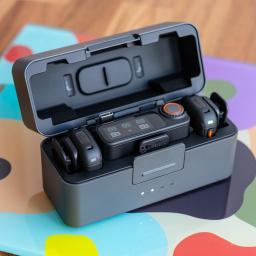 |
by Steve Dent on (#6ZMEQ)
DJI's busy engineering team is at it again with the creation of the company's third wireless mic system in less than two years. The new flagship DJI Mic 3 has a wholesale design change from the Mic 2 plus numerous improvements in areas like sound quality, noise reduction and the number of subjects you can record at once - though there is one downgrade compared to to the last model. I've had one for over a week so I'll provide some impressions as well. The most noticeable change with the Mic 3 is the smaller transmitter size and lighter weight. It weighs just 16 grams (.58 ounces) compared to 28 grams (.99 ounces) for the Mic 2, though it's bigger and heavier than the Mic Mini transmitter (10 grams). DJI has also improved the transmitter mounting options, introducing a rotating clip along with the magnetic option. There's even a choice of five colors for the windscreen to better match your subject's clothing. The smaller size and rotating clip makes the Mic 3 more discreet and easier to attach to any shirt or hat. However, there's still a large "DJI" logo on both sides of the transmitter that looks ugly but gives the company free advertising, I suppose. Steve Dent for Engadget The charging case holds a receiver and two transmitters and, unlike the last model, now lets you insert the transmitter with the magnetic mount and windscreen still attached. Fully charged transmitters can run for about eight hours and the receiver can go 10 hours. However, the case provides enough power to charge all three devices 2.4 times for about 28 hours of extended use. This feature makes the Mic 3 useful for marathon shoots and was key to the success of the original DJI Mic, though competitors like Sennheiser have caught on and introduced similar cases. The Mic 3 now supports up to four transmitters and eight receivers at once. That means you can record four subjects at a time to as many as eight receivers simultaneously for multi-camera shoots (if you purchase the extra kits, of course). I wasn't able to test this feature as I had just a single kit, but it'll be handy for large jobs if it works as advertised. To make syncing and lining up all that audio and video simpler, the Mic 3 now offers high-precision timecode capture embedded during internal recording. I tested this feature with two cameras, and once I figured out how to align the shots in DaVinci Resolve, it proved to be a valuable post-production timesaver. DJI The receiver can also be set to quadrophonic mode for select Sony cameras and software, allowing independent output of four channels at once to a single camera. DJI is promising a range of 400 meters (around 1,300 feet) and strong resistance to interference via automatic frequency hopping between the 2.4GHz and 5GHz bands. There are some major improvements in audio quality as well. It's DJI's first microphone with two adaptive gain control modes. For noisy outdoor environments like sporting events, Automatic mode suppresses sudden volume spikes to prevent clipping. Dynamic mode, meanwhile, adjusts gain on the fly in response to volume changes to ensure consistent loudness in quieter settings like studios. I tested this feature in Paris in a relatively quiet studio and outside with traffic and other city noises. The Automatic setting did a good job suppressing those unwanted sounds without a noticeable impact on audio quality. And the dynamic mode kept my speaking levels steady even when I trailed off at the end of sentences, again without impacting voice timbre or clarity. DJI The Mic 3 is also DJI's first with three tone presets (Regular, Rich and Bright) to handle different voice characteristics (medium, low and high pitches). This feature also worked as advertised. Set to "Regular," I needed less equalization than usual to even out my voice and it worked equally well on a higher-pitched female voice. Two-level active noise cancelation reduces background sounds like air conditioning and wind noise. Again, this worked effectively, though like any noise reduction algorithm, it impacted voice quality by artificially reducing some frequencies. Finally, the lossless audio feature lets the mic send uncompressed 48kHz 24-bit audio directly to the receiver to eliminate any MPEG audio artifacts. This is likely overkill for most use cases. While the Mic 3 offers good sound quality, it's nowhere close to a dedicated high-end studio microphone - so you'll be hard pressed to notice any difference. DJI also added internal dual-file 24-bit and 32-bit float recording, which records the highest quality possible without any clipping. That allows you to capture two files of 32-bit float sound without algorithmic changes, two channels of 24-bit sound with algorithmic changes or one of each. That's an improvement over the Mic 2, which only captured a single file of the original sound internally in 32-bit float. DJI There's one key feature missing on DJI's Mic 3 that might make it a non-starter for some audio pros. Unlike the Mic 2, the transmitter lacks a 3.5mm mic port for wired lav or other microphones. That means you're relying on the Mic 3's built in microphone, and although it offers high quality sound, may not be high enough for applications like broadcast. Finally, the Mic 3 works with DJI's OsmoAudio system, so it pairs with the Osmo 360, Osmo Action 5 Pro, Action 4 and Osmo Pocket without the need for a receiver. I tested it with the Osmo 360 and Action 5 Pro and it connected without any issues. For other devices, you can wire it in via a 3.5mm TRS port, TRRS monitoring and a USB-C port, or to smartphones via Bluetooth or USB-C using the included adapter. DJI's Mic 3 is now on sale in most territories, priced at $329 in a kit with a charging case plus two transmitters and a receiver, or $219 with a single transmitter and receiver. Update, August 28, 2025, 9:45AM ET: This story was updated with US sales links. DJI originally said the Mic 3 wasn't available in the US yet, but the company changed course and the new product can be purchased from DJI or Amazon.This article originally appeared on Engadget at https://www.engadget.com/audio/djis-much-smaller-mic-3-can-record-four-subjects-at-once-120032192.html?src=rss
|
 |
by Matt Tate on (#6Z6TF)
The back-to-school season is a good time to save on tech, whether you're returning to campus or not. While some discounts are reserved for students, others are available to everyone. One of the best right now is on Apple's M3-powered iPad Air, which is somewhat of a goldilocks tablet - one that will be a great option for just about everyone. You can grab it for $150 off at Amazon right now. This deal applies to each configuration of the 11-inch and 13-inch versions of the most recent iPad Air. So, the 11-inch model is as low as $449, while the 13-inch model is down to $649. The same deals can be found at Best Buy and Target if you prefer to shop somewhere other than Amazon. This is an all-time low price and beats the deal we saw on Prime Day by $30. The iPad Air M3 is more of an iterative refresh than a grand overhaul, but the spec bump means it'll last you a long time before the tablet's performance becomes a problem. This iPad occupies the position of "best for most" in our iPad buying guide, reinforcing that goldilocks analogy. The M3 chip is the main draw here, with Geekbench 6 scores proclaiming it around 16 percent more powerful than the M2 iPad Air, which is no slouch itself. Beyond the chip, it has a superior display and speakers to the entry-level model, and wider accessory support. You also get the option of a 13-inch display, which is great for artists or anyone who sees the iPad as a viable laptop replacement. If there's an obvious downside to the iPad Air M3, it's that it doesn't have the nice 120Hz OLED display of the iPad Pro. This is hardly surprising, as Apple often focuses on display tech to differentiate its Pro and non-Pro devices, but it's probably time the refresh rate on the middle-of-the-road iPad at least jumped up to ProMotion. Face ID is long overdue too. If you can live with these caveats, though, the iPad Air is an excellent option, particularly at this price. If you think the Air is too much for your needs, the iPad A16, Apple's entry-level tablet, is down to $299 right now. It was slightly cheaper during Prime Day in July, but this discount is still worth considering if you're looking to pick up a newer iPad for less. Check out our coverage of the best Apple deals for more discounts, and follow @EngadgetDeals on X for the latest tech deals and buying advice.This article originally appeared on Engadget at https://www.engadget.com/deals/apples-ipad-air-m3-gets-a-150-discount-for-labor-day-162908706.html?src=rss
|
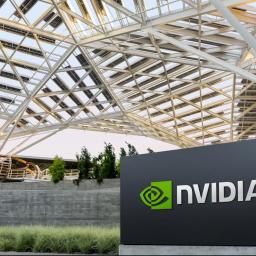 |
by Mariella Moon on (#6ZMHY)
NVIDIA has revealed that its revenue for the second quarter ending on July 27 rose 56 percent compared to the same period last year, and that's without shipping any H20 chips to China. It reported a revenue of $46.7 billion and a net income of $26.4 billion. As CNBChas noted, the company previously said that H20 shipments to China could have added $8 billion in sales to its second quarter figures. Instead, the company was only able to release $180 million worth of the chips to a customer outside of China. NVIDIA clearly still did very well in the second quarter, however, just like in the previous ones. This is the ninth straight quarter, ever since AI skyrocketed in popularity back in 2023, wherein the company's year-on-year revenue increase has exceeded 50 percent.The company designed the H20 specifically for the Chinese market, but the US government blocked its shipment earlier this year over concerns it could aid the nation's military. In mid-July, the government told NVIDIA that it will be able to ship the H20 to China again, but Chinese authorities discouraged local tech firms from using the chips. Now, the company is believed to be developing a new chip for China that's more advanced than the H20 and is based on the company's Blackwell architecture. Both the H20 and this upcoming more advanced chip could lead to another big leap in revenue and sales for the company.Speaking of Blackwell, NVIDIA has also announced that sales for its Blackwell-based chips rose 17 percent from the first quarter. The new product line, which is designed for advanced AI, reached $27 billion in sales and represented 50 percent of the company's data center revenue.This article originally appeared on Engadget at https://www.engadget.com/ai/nvidia-is-really-profiting-from-the-ai-boom-133044352.html?src=rss
|
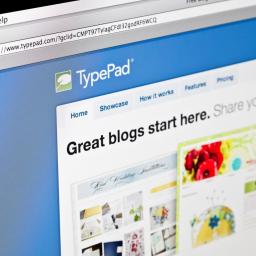 |
by Mariella Moon on (#6ZMEN)
Typepad, a blogging service that launched in the same year as WordPress, has announced that it's shutting down on September 30. "We have made the difficult decision to discontinue Typepad," its team said in a post. Several major publications used it as a backend for their websites in its early years, and it even released an app in 2008, but it soon fell behind WordPress in popularity. The service stopped accepting new signups sometime in 2020 but continued supporting its old customers. One user contacted Typepad back in March this year and was told that Typepad still supports its "existing customers and there are no plans for that to change," so shutting it down was a recent decision.After September 30, users will no longer be able to access their account management settings, their blogs and all associated content. Everything will be deactivated permanently. They will, however, be able to export their content before September 30 in Movable Type Import Format, which they can then upload to WordPress. Typepad will stop charging users for subscription starting on August 31, and if a user has recently made a payment, it "will attempt to issue a prorated refund to the payment method on file." There are probably only a few people still using Typepad these days, but let's pour one out for the old blogging service.This article originally appeared on Engadget at https://www.engadget.com/social-media/early-blogging-service-typepad-is-shutting-down-for-good-130033731.html?src=rss
|
 |
by Devindra Hardawar on (#6ZMEP)
Early this summer, my wife and I had an inconvenient realization: we may need to be in two places at once. An urgent doctor appointment could conflict with YMCA day camp pickup, or our kids would get invited to two birthday parties on the same morning at godforsaken activity centers in separate towns. There was no doubt we needed another car. A big ticket purchase seemed unjustifiable when we don't know what eggs will cost next month - and my search for an aftermarket Prius within my budget was strangely fruitless. As it turns out though, now might be the best time to grab a used EV.During my search, I saw BMW i3s (those freakish go-kart looking EVs) and VW e-Golfs selling for around $15,000, both of which are more fun to drive and have better tech features than older Prii. Couple those low prices with the soon-to-be-expired EV tax credit - which can get you up to $4,000 off certain used EVs and plug-in hybrids (PHEVS) - and some cars could cost $10,000 or less! Meanwhile, I couldn't find a decent 2015 Prius below $17,000.Long story short, I settled on a boring-yet-secretly-fun option: A 2018 Nissan Leaf. It has a range of 150 miles and a hatchback design that looks less funky than the original bug-eyed sub-compact. It accelerates quickly, it's relatively engaging to drive and it also has premium leather seats, radar-assisted cruise control and a decent Bose speaker system. Not bad for something close to $15,000 with only 33,000 miles!Even though it's worth far less than our stately Volvo XC90, I genuinely have more fun zipping around town in the Nissan Leaf. There's the magic of the instant torque you get from its electric motor, the convenience of one-pedal driving (Nissan calls it "e-pedal") and its cherry red paint lets me pretend I'm having a mid-life Miata crisis like my middle school rhetoric teacher. Plus it can easily fit a large toddler car seat and a booster for my six-year old, and it has enough trunk space to deal with massive grocery hauls. Thank god I didn't get a Prius.Devindra Hardawar for EngadgetWhy are used EVs so cheap?Many EVs just don't hold their value - you can blame the fast-evolving EV components and consumer uncertainty for that. But that also means you can find gently used models for far less than their list price. If I was less responsible and pushed my budget a bit higher, I'd absolutely consider a recent Hyundai Ioniq 5 for around $25,000. It's well-reviewed, and it looks like an '80s retro-future hatchback. What's not to love?(And yes, you could also look for used Teslas if you want. I can't vouch for the quality of that brand, and personally I wouldn't recommend getting stuck in its ecosystem.)You can find even deeper discounts for less popular cars, like the Polestar 2 (which would honestly look great in my driveway next to its Volvo cousin). That luxury EV started at $61,000 at launch - but now it's easy to find used Polestar 2s for around $25,000.No matter which used EV you're looking at, be sure to check out its battery health level. Most early EVs relied on air cooling for their batteries, and their chemistry isn't advanced as modern cars, which means degradation can be common. You can typically find a battery health indicator in a car's settings, but OBD sensors and apps like LeafSpy may provide a more accurate sense of their longevity.So long, EV tax creditThe Biden-era EV tax credit can also shave off up to $4,000 from select used EVs and $7,500 from new models, but unfortunately thanks to Trump's "Big Beautiful Bill" it's likely to be discontinued at the end of September. I've seen some dealers highlight cars eligible for tax credits, and that's also true for online stores like Carvana. Just be sure to check the IRS requirements - notably, the new vehicle credit only applies for individuals earning less than $150,000 and married couples filing jointly who earn less than $300,000.The used vehicle credit is even more restrictive, as it only applies to individuals earning less than $75,000 and married joint filers earning under $150,000. Additionally, qualifying EVs have to be priced under $25,000, and must be 2023 models or older. You'll also have to buy the used EV from a dealer - personal sales don't apply.How I learned to deal with range anxietyOne major reason older EVs have gotten cheaper is that they often offer relatively low driving ranges. The 2021 BMW i3 can run up to 153 miles, but older models topped out at 85 miles (there are also Range Extender models that use a small gas engine to slowly recharge the battery). My 2018 Leaf tops out at 150 miles, but there are also "Leaf Plus" models that can reach up to 226 miles.Those numbers are a long way off from the 300-miles or so we expect from new EVs and gas cars, but I'd also argue the shorter range isn't a huge deal for many people. US DOT data tells us that 95 percent of trips in personal vehicles cover less than 31 miles, and the average driver travels 37 miles per day. That makes low-range EVs ideal as secondary vehicles for local driving.Between day-care pickup, grabbing groceries and other local errands, I rarely drive more than 20 miles a day in my Leaf. That typically eats up only 10 to 15 percent of charge per day, depending on how much I need to blast the AC to deal with Georgia summers.Now I won't deny that you wouldn't want to go road tripping with a low-range EV, especially with America's messy charging infrastructure. Low-range EVs aren't for everyone. But if that's your worry, I'd just recommend avoiding the cheap sub-$15,000 used EVs. You'll find plenty of models with bigger batteries near $25,000.Devindra Hardawar for EngadgetCharging might be easier than you thinkIf you can string a 25 foot power cord outside, you can easily Level 1 trickle charge an EV. And for moderate drivers, that may be all they need to keep their car juiced up. If I plug in my Nissan Leaf at 5PM, it can typically charge up by 40 percent by 8AM, thanks to its small battery. For larger EVs like the Kia EV9, I can usually get 10 to 15 percent of a charge overnight.Of course, things become more complicated if you're in your car all day and need faster charging, or if extreme weather causes your battery to drain faster than usual. At that point, you'll either have to seek out a public charging point, or get a Level 2 charger installed at home. Neither option is especially difficult, but they're more annoying than simply going to a gas station for a few minutes. I wouldn't be surprised if that's the big stumbling block pushing mainstream shoppers away from EVs.From what I've seen, though, many people are just hesitant to break their existing habits. If you have the ability to install a Level 2 charger in your garage, it's not especially difficult or expensive (though running an extra power line could be a big spend). And EV chargers are also popping up like weeds in shopping centers, so it may not be that tough to park up and charge while running errands.In my case, I'm perfectly fine running a Level 1 charger to an outlet near my front door. That does mean I'll occasionally have a thick electrical cord draped across my front porch (something I'm sure my wife just loves), but I can live with it for now. I do plan to get a Level 2 charger installed eventually though - it'll make testing EVs a lot easier, and I can prepare myself for a more spacious family EV to replace our gas guzzling SUV.This article originally appeared on Engadget at https://www.engadget.com/transportation/evs/its-the-perfect-time-to-buy-a-cheap-used-ev-123015687.html?src=rss
|
by Valentina Palladino on (#6A8K3)
If your Wi-Fi signal is struggling to reach every corner of your home, a signal booster - also known as a Wi-Fi extender - might be the fix you need. Whether you're dealing with annoying dead zones, buffering video calls or laggy gaming sessions, the right Wi-Fi extender can help expand coverage and improve connectivity without forcing you to move your router.
 |
by Ian Carlos Campbell on (#6ZM2Z)
Samsung is hosting another Unpacked event on September 4, and this time it'll only be available to watch virtually. The event will stream on Samsung's YouTube page and website at 5:30AM ET, following the in-person launch events the company held for the Galaxy S25 line in January and the new Galaxy Z Fold 7 and Z Flip 7 in July.With most of the company's smartphone lineup accounted for, Samsung will likely use this Unpacked to introduce new tablets. The company announced the the Galaxy Tab S10 Lite earlier this week and now leaks point to a new Galaxy Tab S11 and S11 Ultra being in the works, according to Notebookcheck. The Tab S11 will reportedly feature an AMOLED screen, 12GB of RAM and a MediaTek Dimensity 9400 chip, rather than Samsung's preferred Qualcomm Snapdragon chips. The Tab S11 Ultra will have similar features, but with a larger AMOLED, up to 16GB of RAM, the same MediaTek chip and a larger 11,600mAh battery.Odds are also good that Samsung will announce the Galaxy S25 FE, a cheaper alternative to the normal Galaxy S25. Based on the leaks SamMobile compiled, the S25 FE will share many similarities with the S24 FE, save for an improved 12MP selfie camera, up from 10MP on the S24 FE, a larger 4,900mAh battery and faster wired charging speeds.Provided you're willing to get up early, you'll be able to see for yourself when Samsung streams its next Unpacked event on September 4. It likely won't be the last event the company holds this year, either. The Project Moohan Android XR headset and Samsung's first trifold phone are also expected to be released in 2025.This article originally appeared on Engadget at https://www.engadget.com/mobile/smartphones/samsung-will-hold-another-unpacked-on-september-4-230040711.html?src=rss
|
 |
by Anna Washenko on (#6ZM30)
Most of the time, AI companies are locked in a race to the top, treating each other as rivals and competitors. Today, OpenAI and Anthropic revealed that they agreed to evaluate the alignment of each other's publicly available systems and shared the results of their analyses. The full reports get pretty technical, but are worth a read for anyone who's following the nuts and bolts of AI development. A broad summary showed some flaws with each company's offerings, as well as revealing pointers for how to improve future safety tests.Anthropic said it evaluated OpenAI models for "sycophancy, whistleblowing, self-preservation, and supporting human misuse, as well as capabilities related to undermining AI safety evaluations and oversight." Its review found that o3 and o4-mini models from OpenAI fell in line with results for its own models, but raised concerns about possible misuse with the GPT-4o and GPT-4.1 general-purpose models. The company also said sycophancy was an issue to some degree with all tested models except for o3.Anthropic's tests did not include OpenAI's most recent release. GPT-5 has a feature called Safe Completions, which is meant to protect users and the public against potentially dangerous queries. OpenAI recently faced its first wrongful death lawsuit after a tragic case where a teenager discussed attempts and plans for suicide with ChatGPT for months before taking his own life.On the flip side, OpenAI ran tests on Anthropic models for instruction hierarchy, jailbreaking, hallucinations and scheming. The Claude models generally performed well in instruction hierarchy tests, and had a high refusal rate in hallucination tests, meaning they were less likely to offer answers in cases where uncertainty meant their responses could be wrong.The move for these companies to conduct a joint assessment is intriguing, particularly since OpenAI allegedly violated Anthropic's terms of service by having programmers use Claude in the process of building new GPT models, which led to Anthropic barring OpenAI's access to its tools earlier this month. But safety with AI tools has become a bigger issue as more critics and legal experts seek guidelines to protect users, particularly minors.This article originally appeared on Engadget at https://www.engadget.com/ai/openai-and-anthropic-conducted-safety-evaluations-of-each-others-ai-systems-223637433.html?src=rss
|
 |
by Anna Washenko on (#6ZM0F)
Crystal Dynamics, the studio behind the recent Tomb Raider games, announced an unspecified number of layoffs today. In a post on LinkedIn, the game developer kept the size of the cuts vague, only stating that "a number of our talented colleagues" would be impacted. In what's becoming an all-too-familiar refrain, the company cited "evolving business conditions" as the reason for the layoffs."This decision was not made lightly," the post reads. "It was necessary, however, to ensure the long-term health of our studio and core creative priorities in a continually shifting market."Crystal Dynamics was acquired by Embracer Group in a 2022 buying spree by the Swedish game company. Embracer still owns the studio, but was forced to do some layoffs of its own in 2023 followed by a restructuring last year. Crystal Dynamics is still working on a new Tomb Raider game, which the company said will not be affected by the layoffs. However, the studio had been tapped to help The Initiative with its Perfect Dark reboot. That project was canceled and The Initiative shut down in a separate wave of massive cuts at Microsoft earlier this year. It's unclear whether that cancelation was a reason for today's cuts.This article originally appeared on Engadget at https://www.engadget.com/gaming/crystal-dynamics-announces-layoffs-but-says-tomb-raider-will-not-be-impacted-205948298.html?src=rss
|
 |
by Ian Carlos Campbell on (#6ZM0G)
Copilot, Microsoft's AI assistant that's integrated into Windows and Microsoft 365, is making the jump to your living room. The company has announced that select Samsung TVs will now be able to access Copilot to ask questions and receive recommendations via voice chat, with the AI assistant represented on your screen as a talking blob.Based on Microsoft's examples, Copilot can recap shows, offer movie suggestions and answer general knowledge questions. It can also go beyond voiced responses (which are apparently synced to the blob's animated mouth movements) and include visual aids, like a card with a movie summary and a Rotten Tomatoes score. You don't need to have a Microsoft account to use Copilot on your TV, but Microsoft says it offers additional personalizations and the ability for the AI to reference past chats if you do.Copilot's blob-ified appearance is part of a bigger redesign Microsoft introduced in 2024 that made the chatbot interface more personalized and user-friendly. Besides being a productivity tool, Microsoft is interested in positioning Copilot as a "companion" with a visual representation that you can customize. The larger customization part isn't available yet, but putting Copilot in a casual setting like your living room fits with that overall goal. Copilot integration was also announced as being a part of LG's 2025 TV lineup. On new Samsung TVs, Copilot joins a collection of Samsung-developed AI features for automatically translating subtitles and identifying on-screen people and products.Copilot is available in select markets on the 2025 versions of Samsung's "Micro RGB, Neo QLED, OLED, The Frame Pro, The Frame, as well as the M7, M8 and M9 Smart Monitors," Microsoft says. You can launch Copilot by clicking on its icon in the Apps Tab or using a voice command. Once the app is loaded, you can talk to the assistant by pressing the mic button on your Samsung remote.This article originally appeared on Engadget at https://www.engadget.com/ai/microsoft-copilot-is-now-a-talking-blob-on-samsung-tvs-204115199.html?src=rss
|
 |
by Anna Washenko on (#6ZM0H)
Remember Judas? No, not the biblical figure and not the Lady Gaga bop, this Judas is a project from Ghost Story Games. If you don't remember, it's the game that was reportedly in "development hell" before it was even announced. The team, led by BioShock creator Ken Levine, had gone pretty quiet for a few years after releasing the debut trailer, but today teased a look at some key art and mechanics for the game.The BioShock lineage is clear from the handful of visuals we've seen so far, but instead of a linear binary of which NPCs and actions are good versus bad, Judas aims to place the moral compass more firmly in the player's hands. There are a trio of major characters, dubbed the Big 3 in today's devlog, who will be drawn to the player based on what you do in-game. If one of the main NPCs gets ignored for too long, they'll become the game's villain. This unlocks new sets of powers and abilities for them that could also influence your gameplay options.For instance, there are Rent-A-Deputy stations where the player can temporarily access a weirdly wiggly ally to help them in fights. However, if you've alienated Tom, the old-school sheriff character, Rent-A-Deputies will attack you instead.The emphasis here seems to be on building relationships with the Big 3, and the gist seems to be that at some point, you'll have to decide which one will be your real enemy. Unsurprisingly, the team has no release date to share yet. Maybe in another couple of years...This article originally appeared on Engadget at https://www.engadget.com/gaming/bioshock-creator-ken-levines-judas-game-still-exists-now-has-key-art-201635885.html?src=rss
|